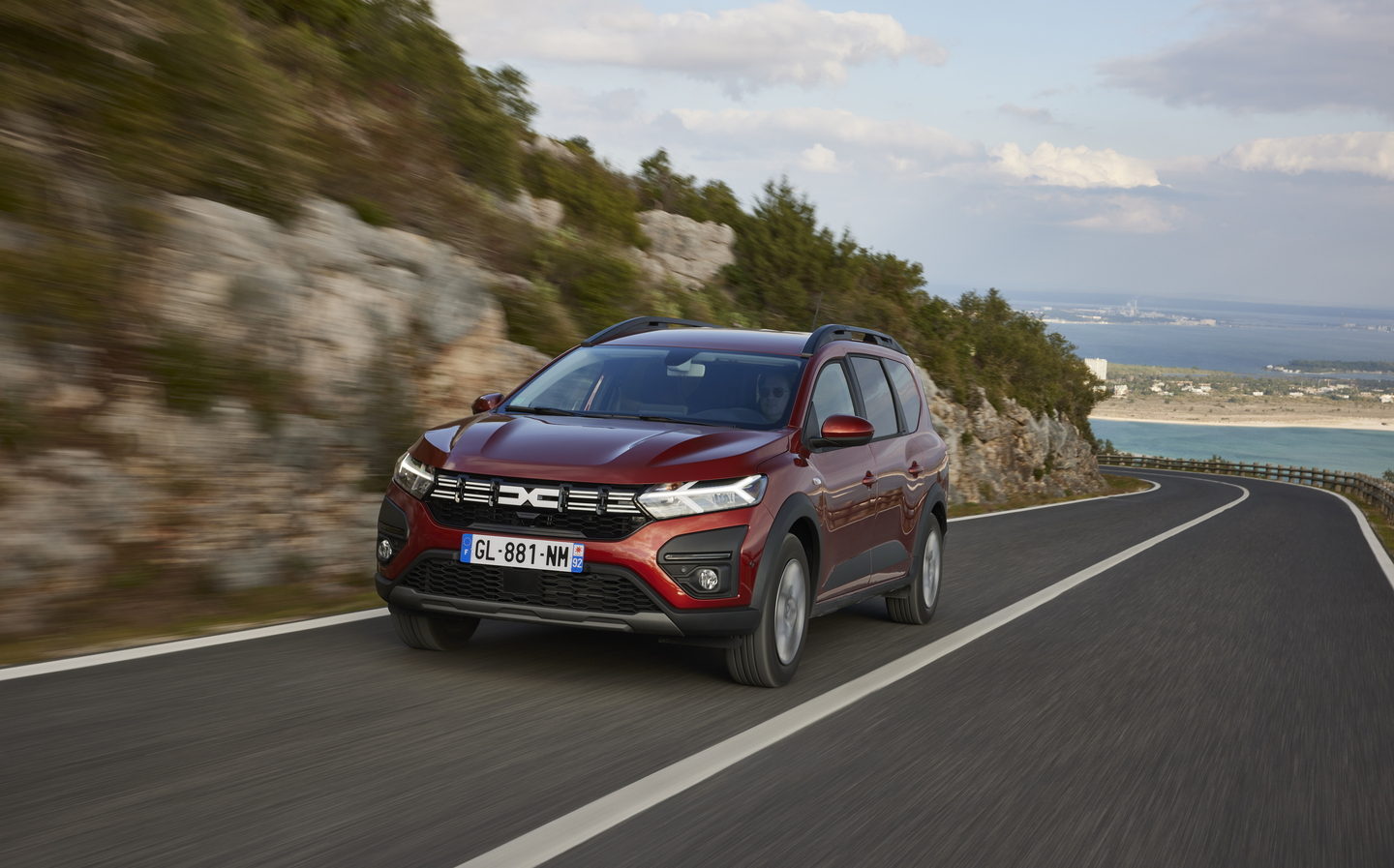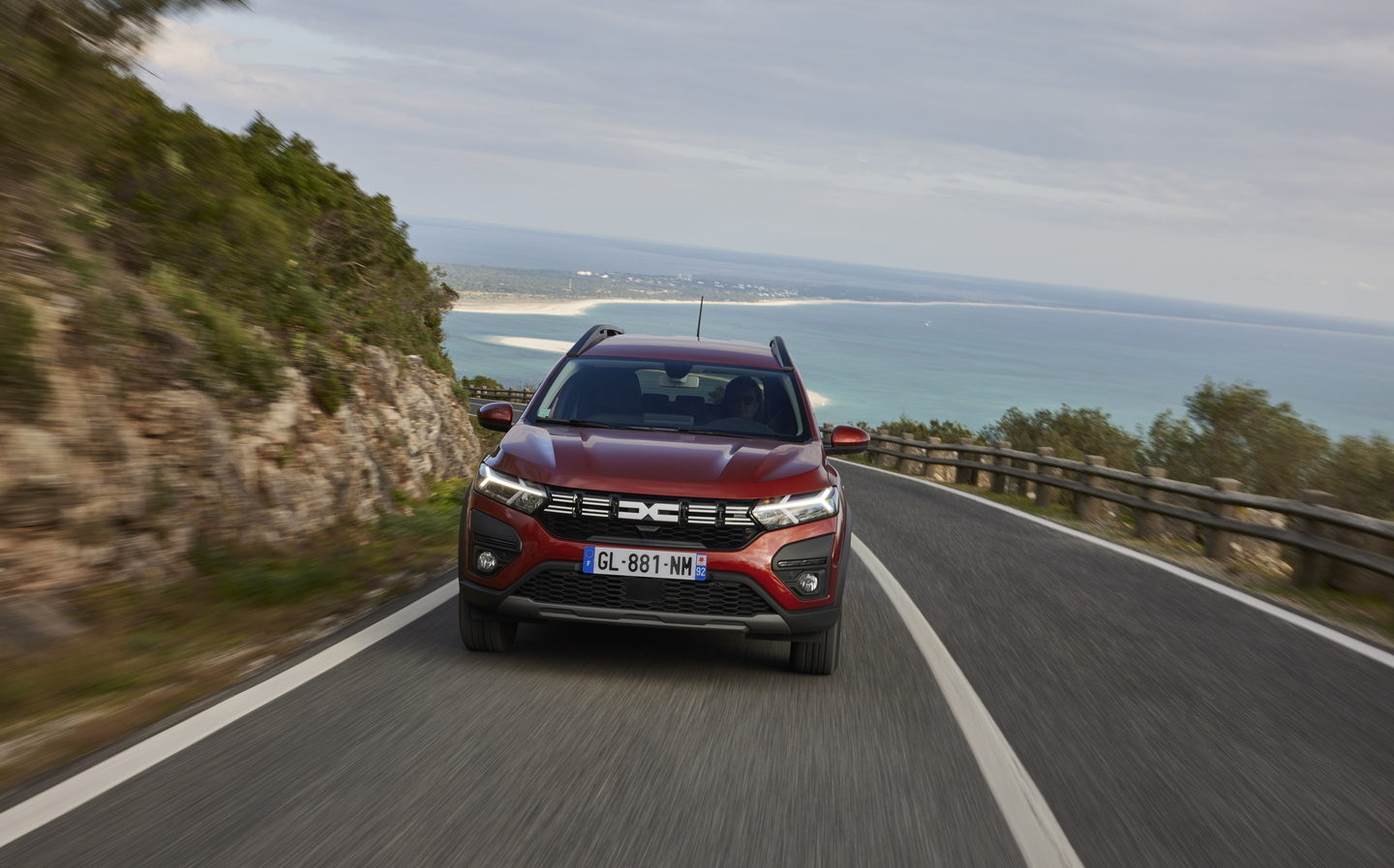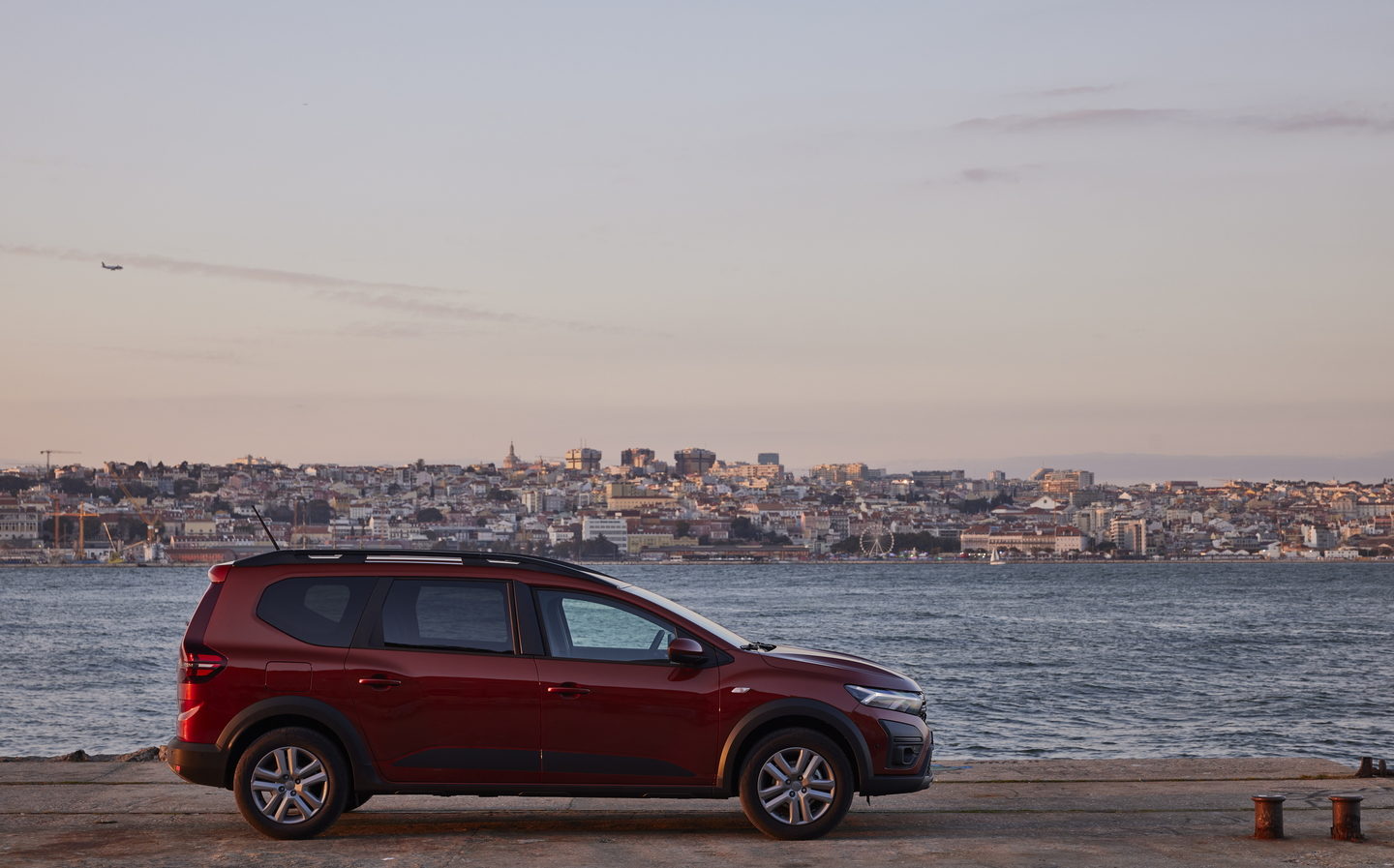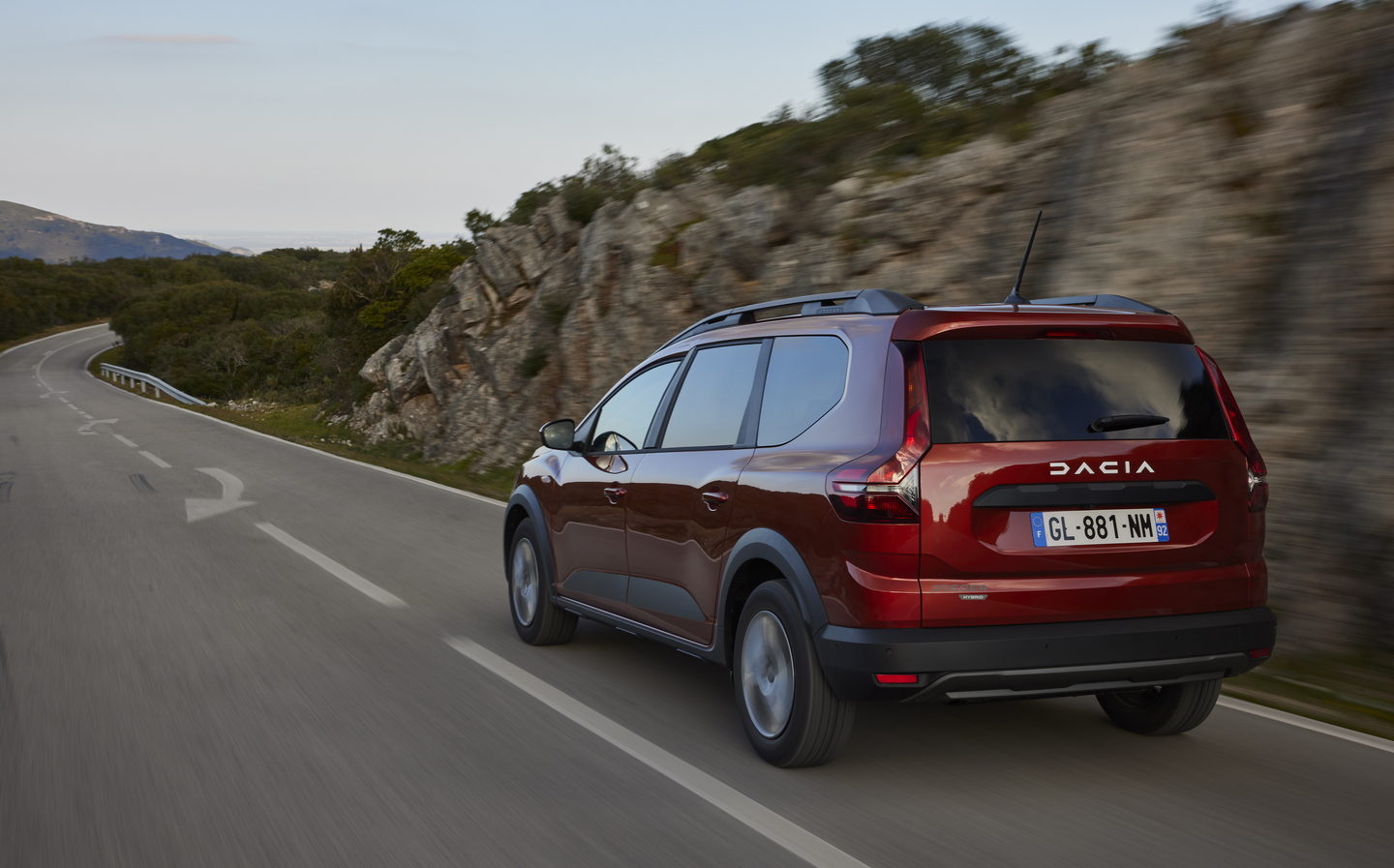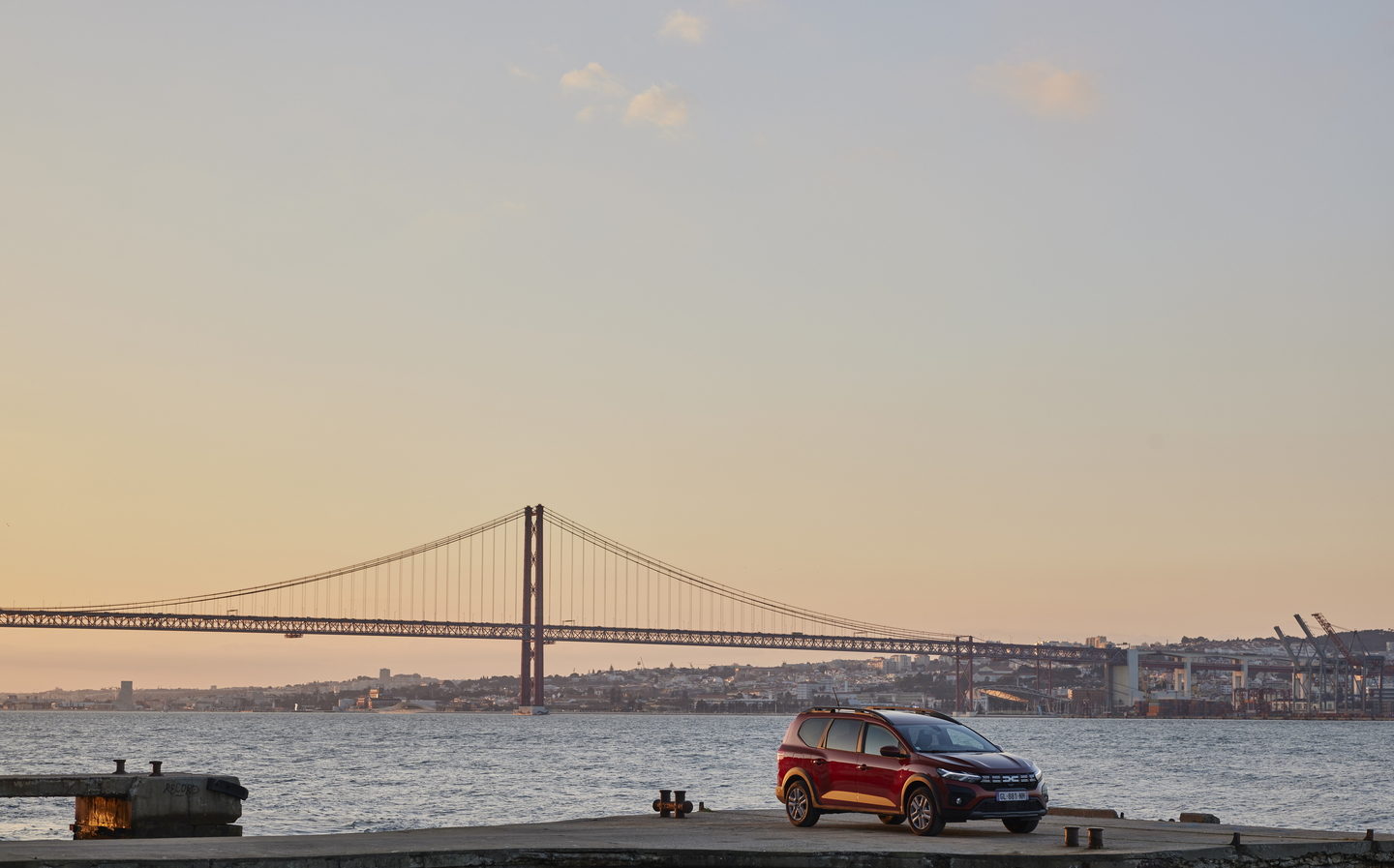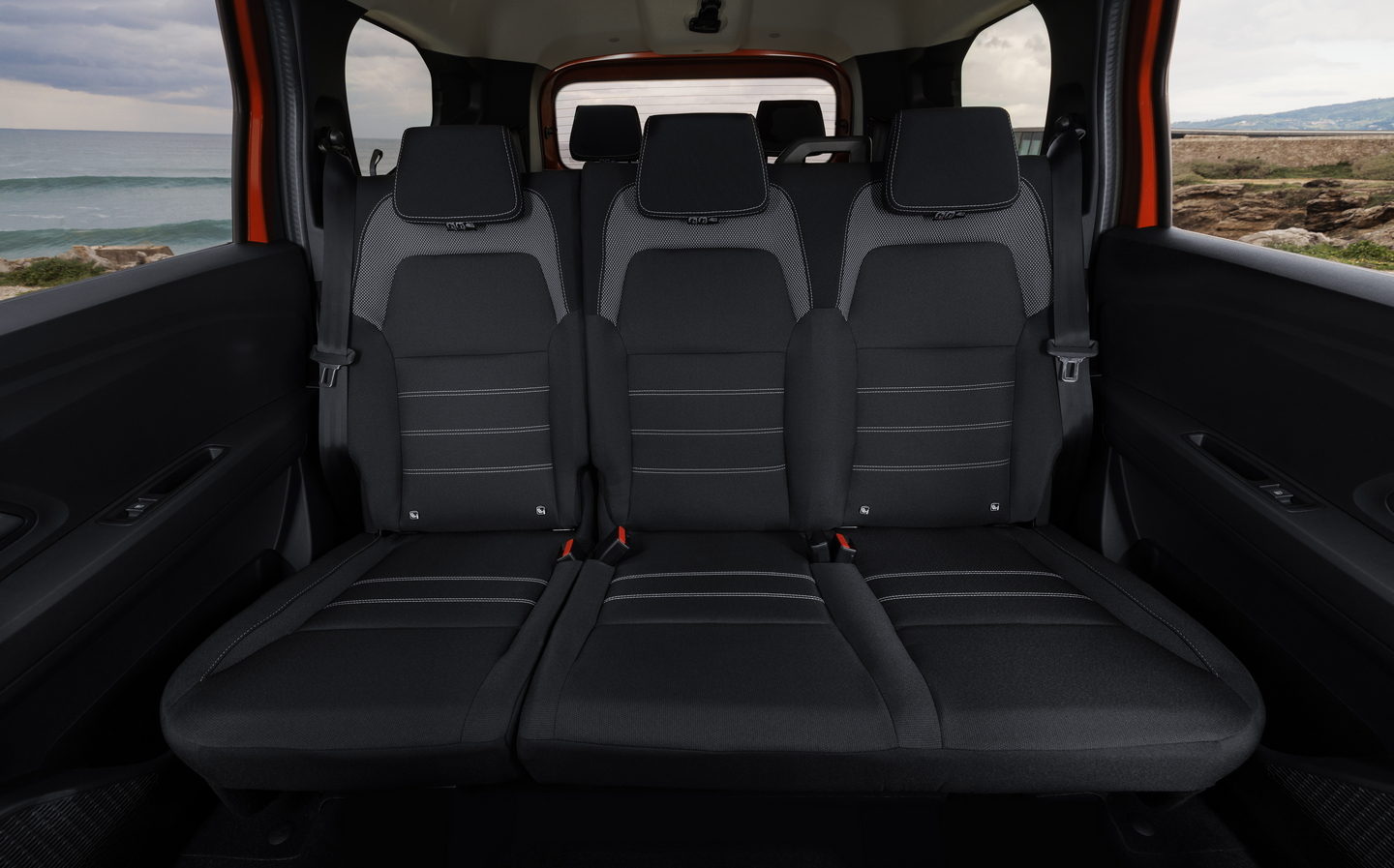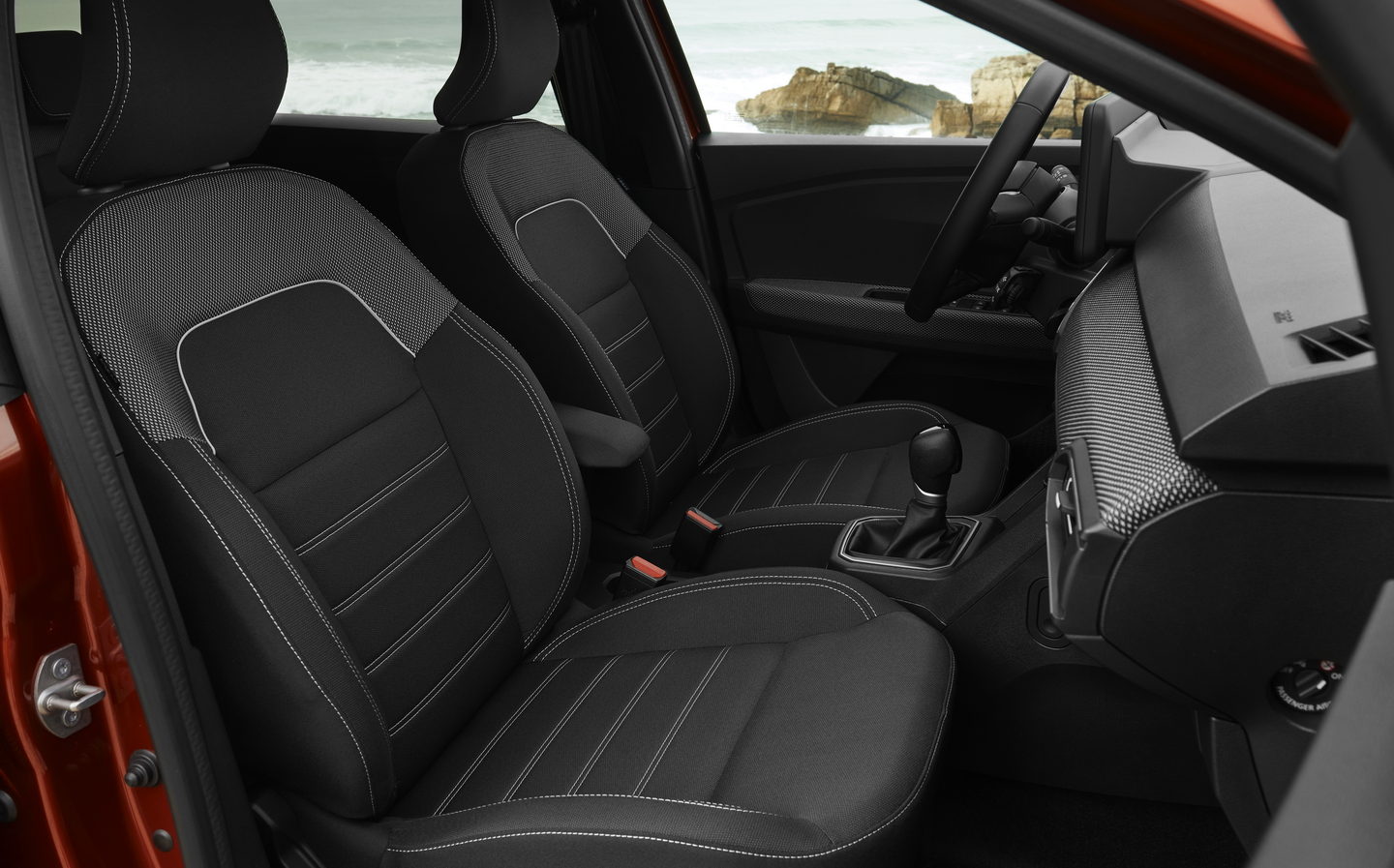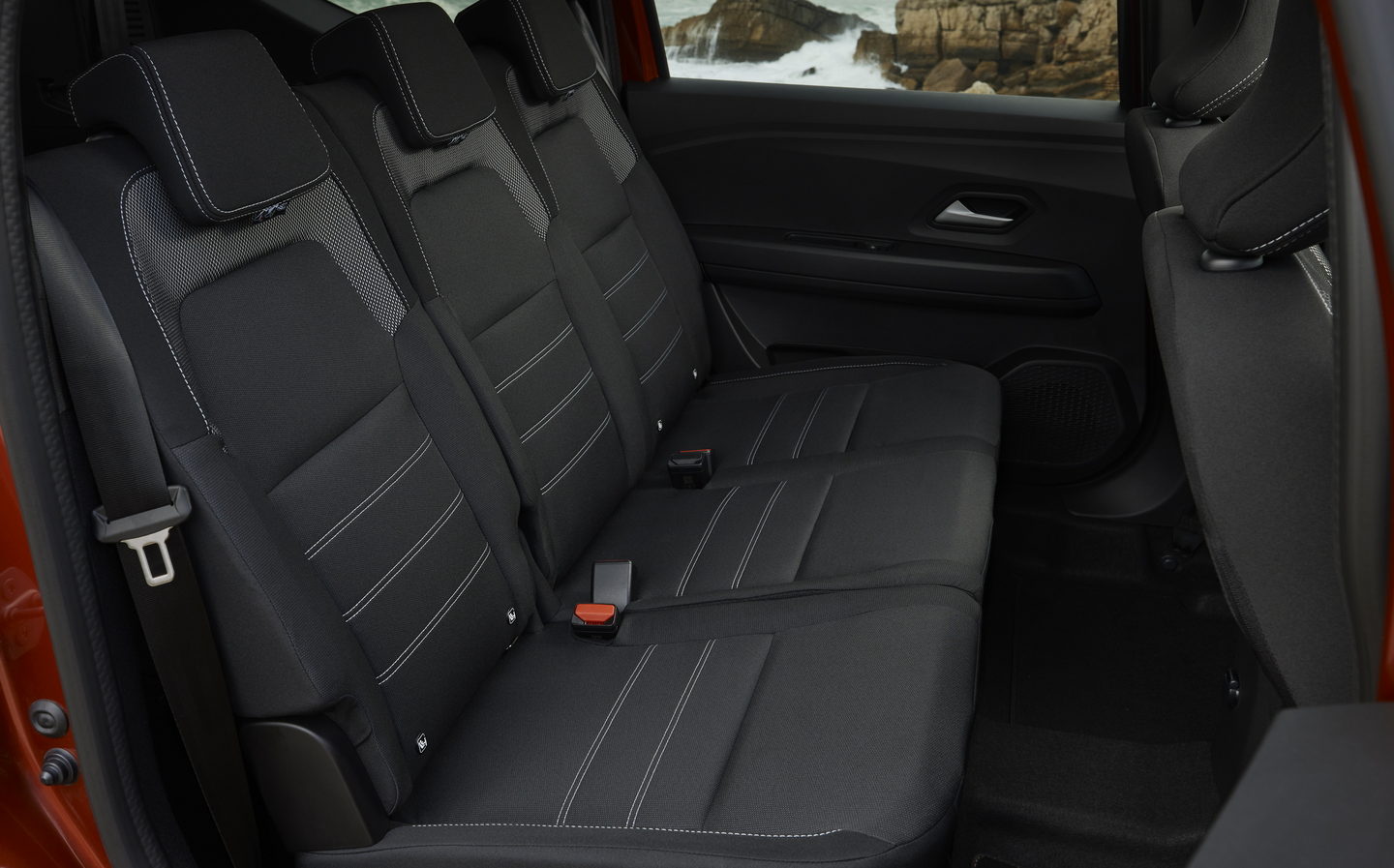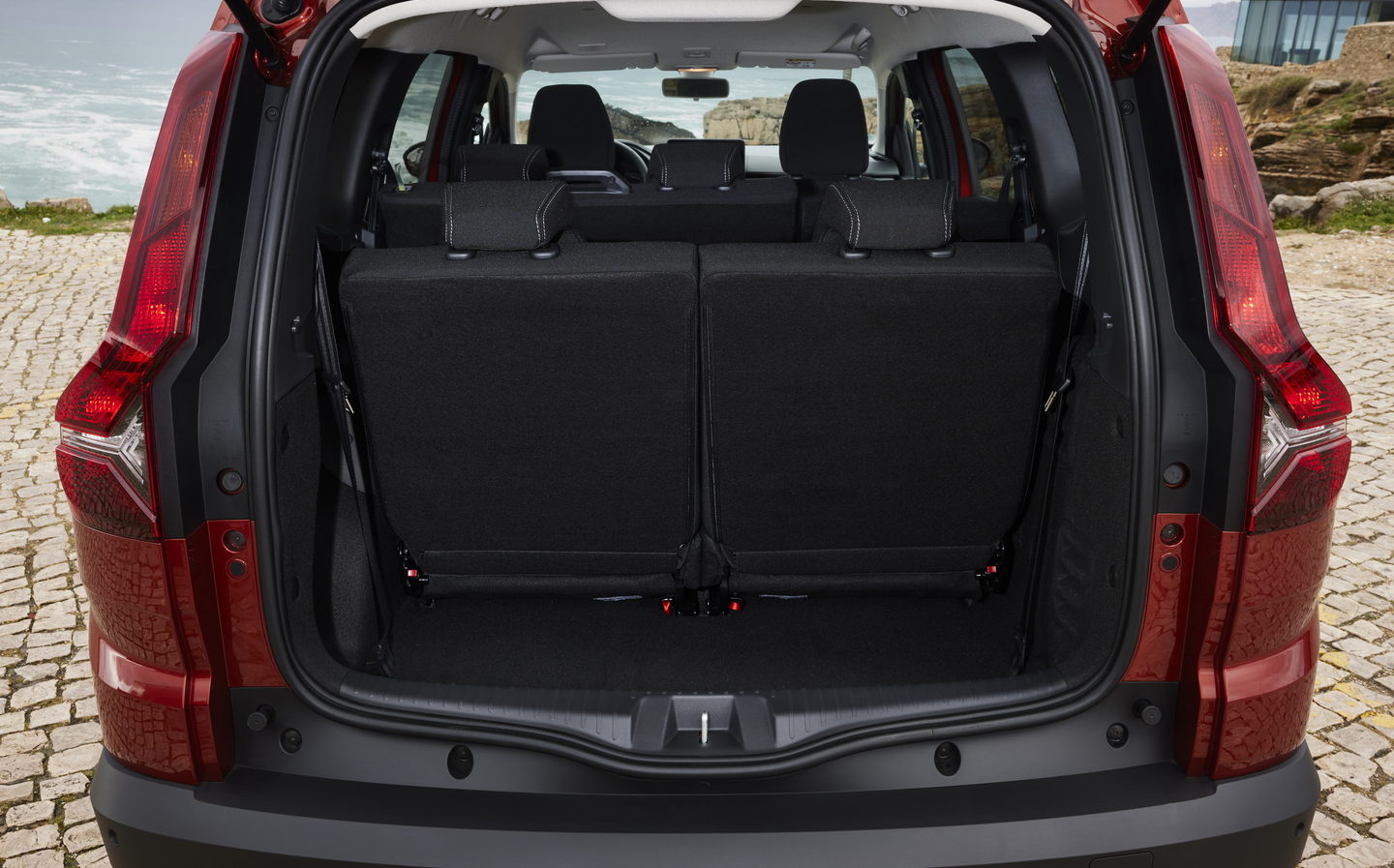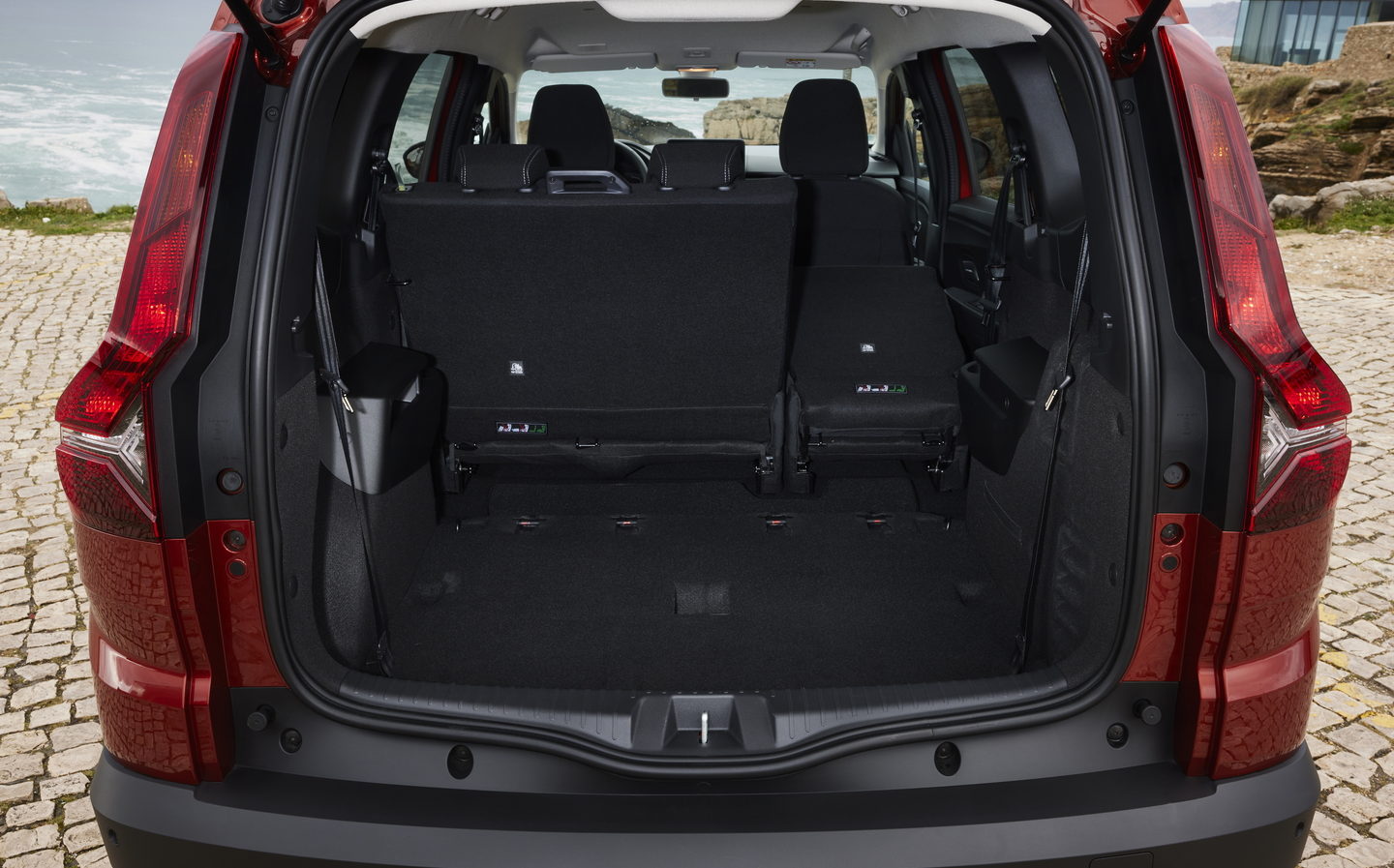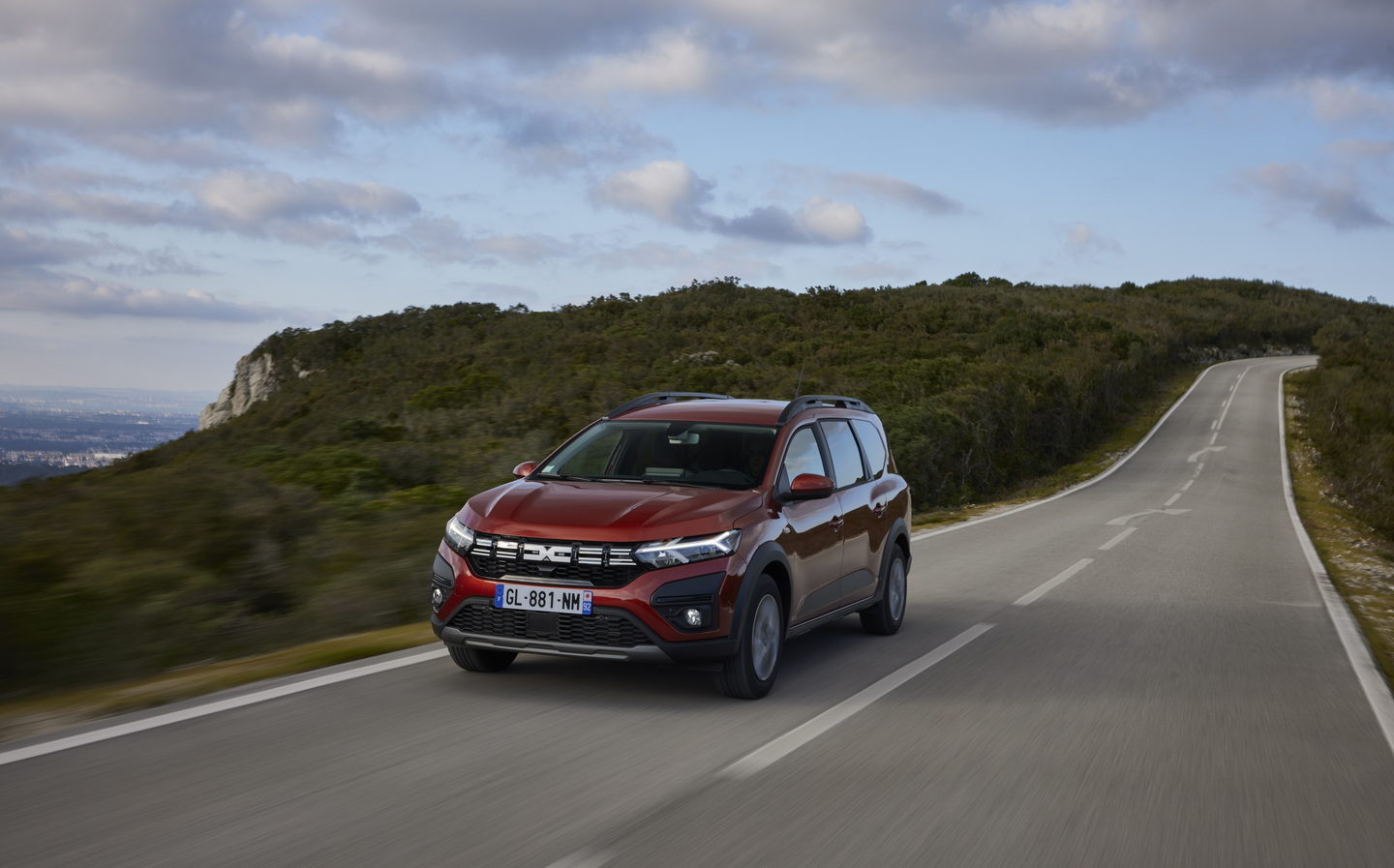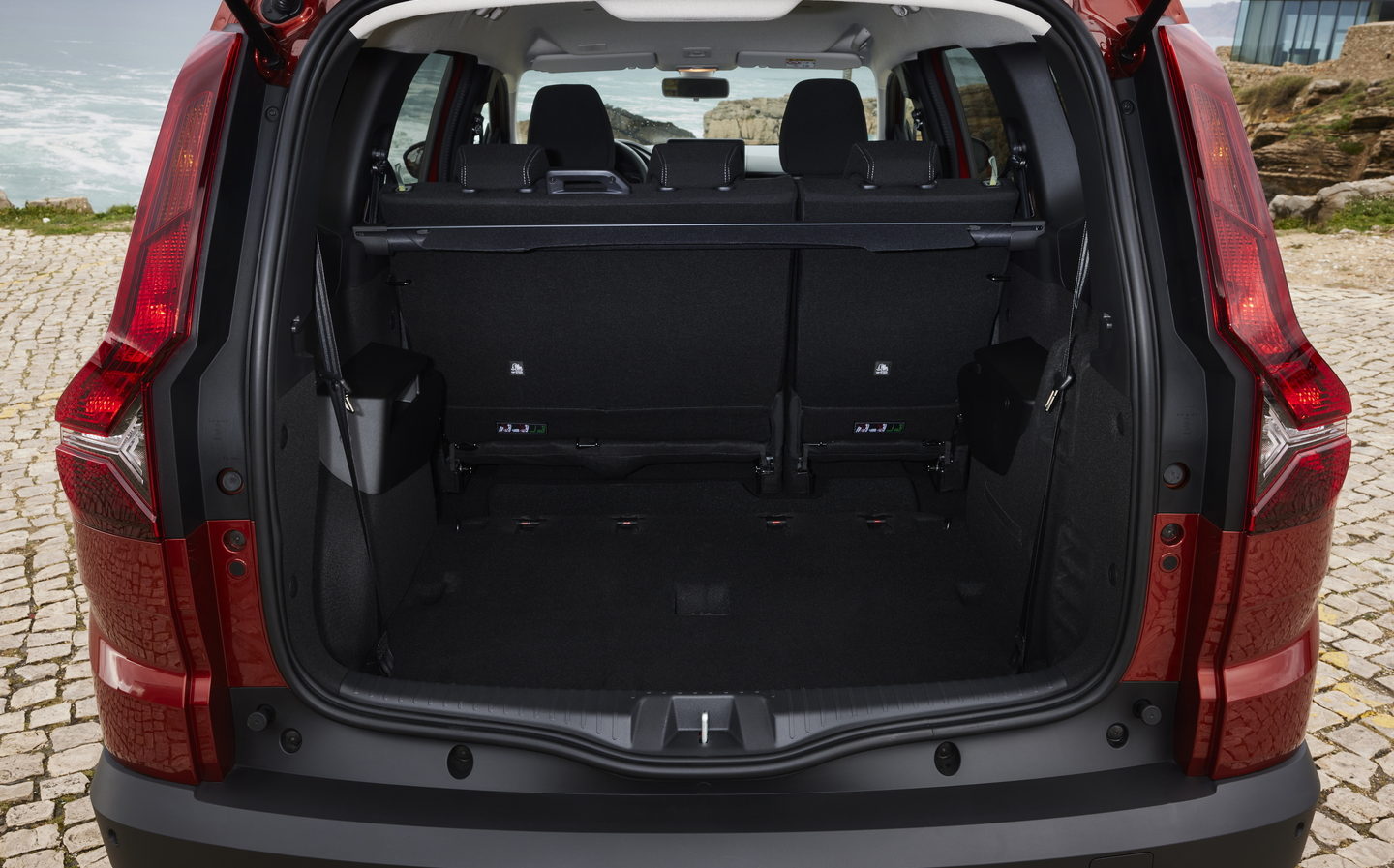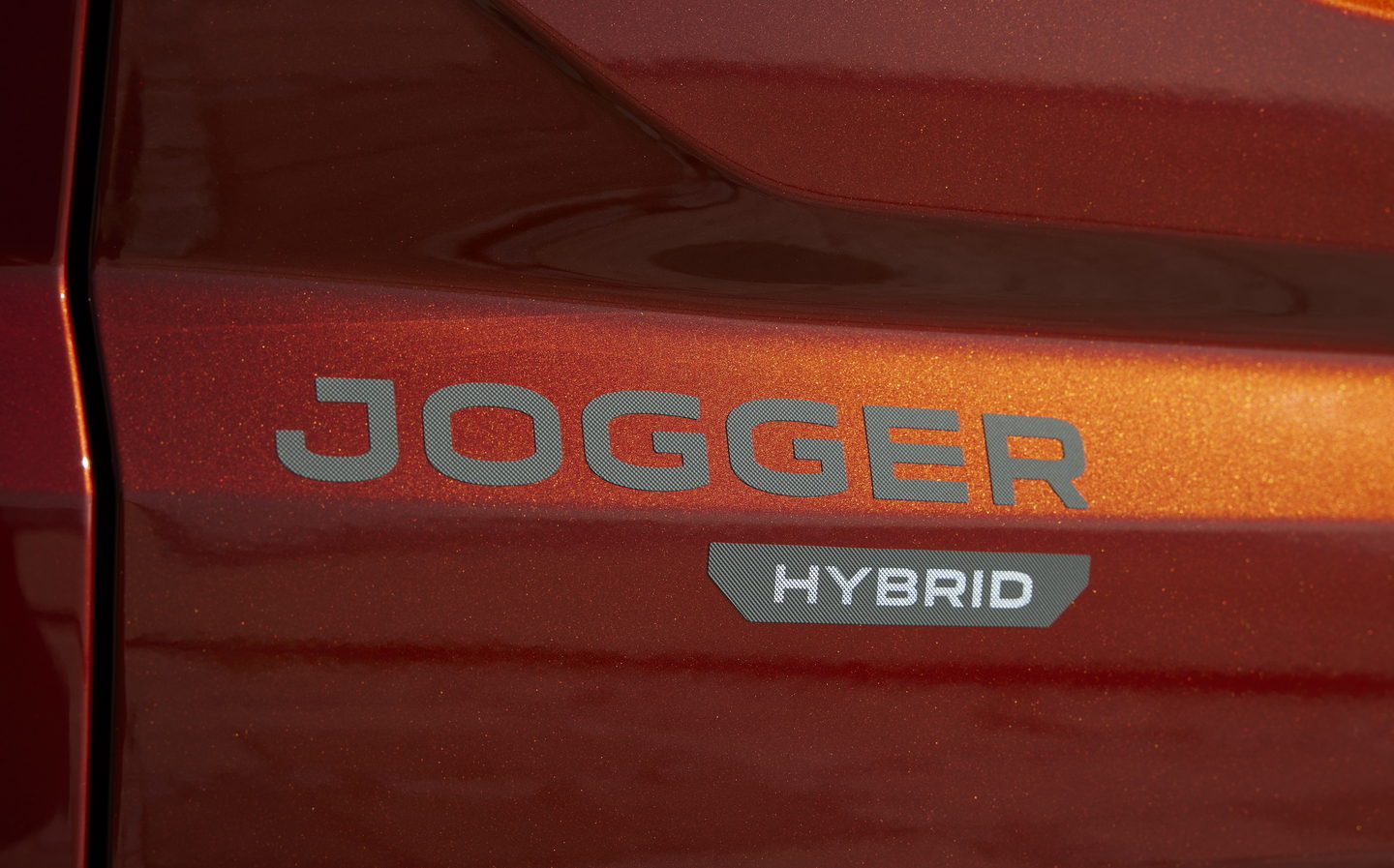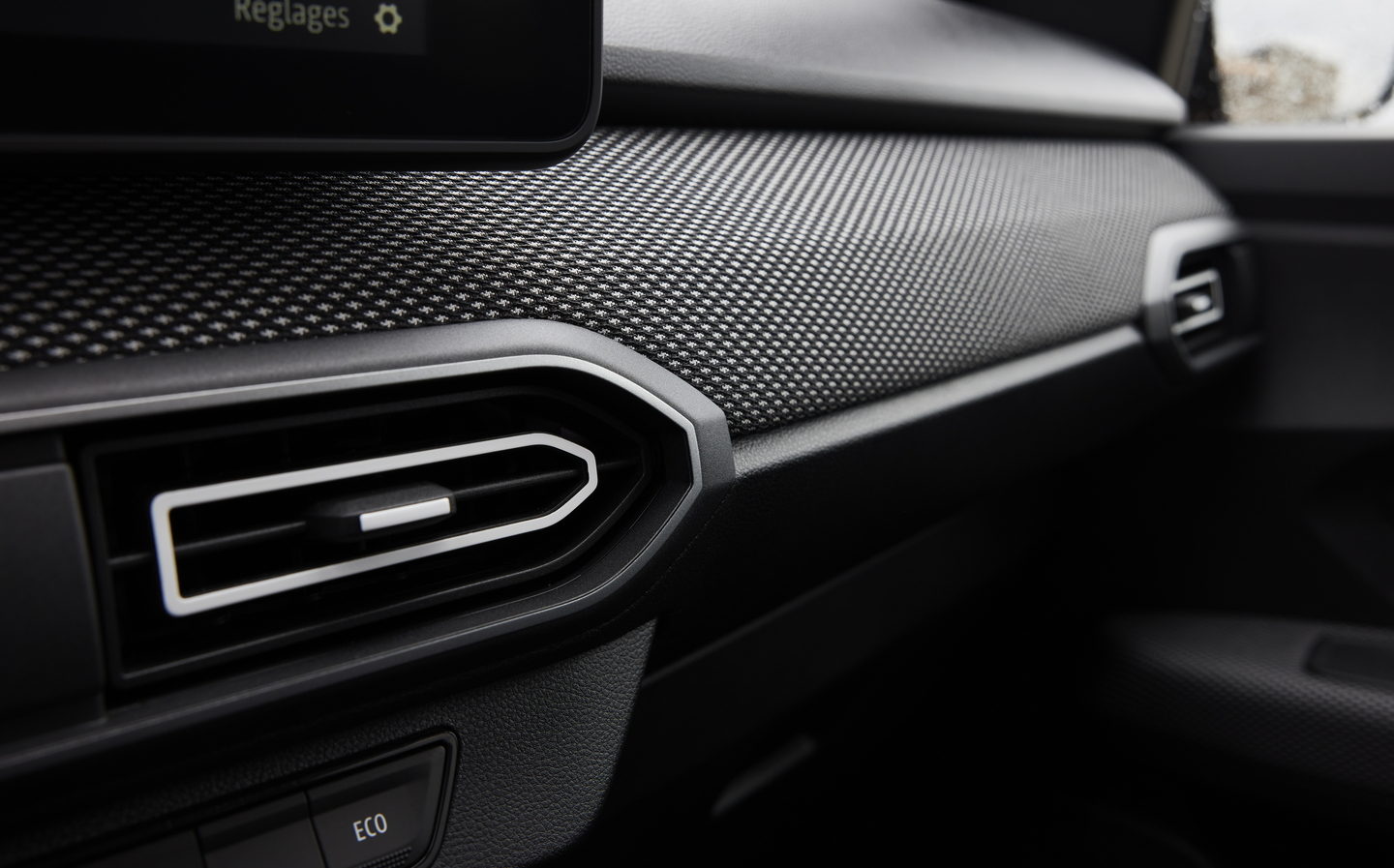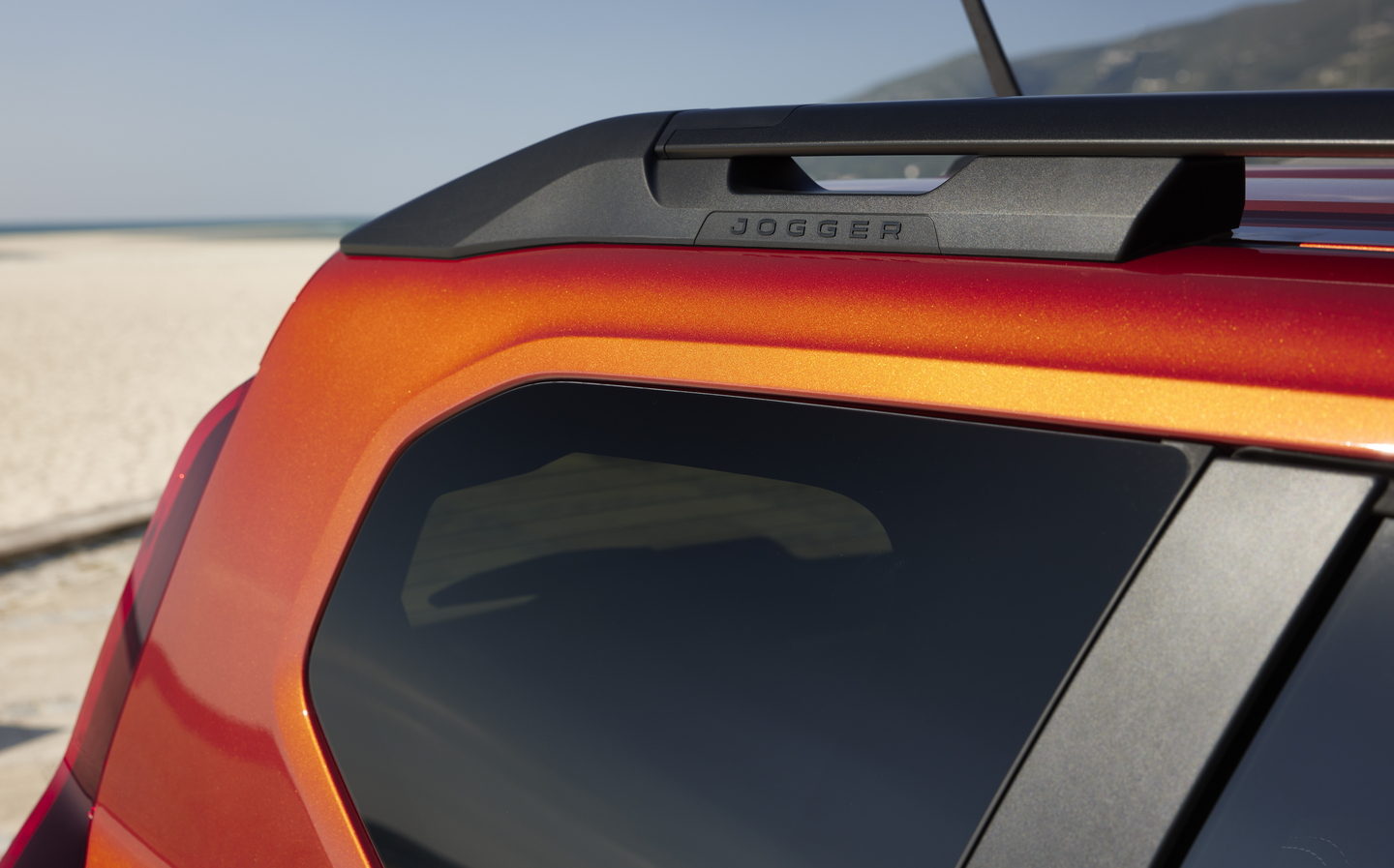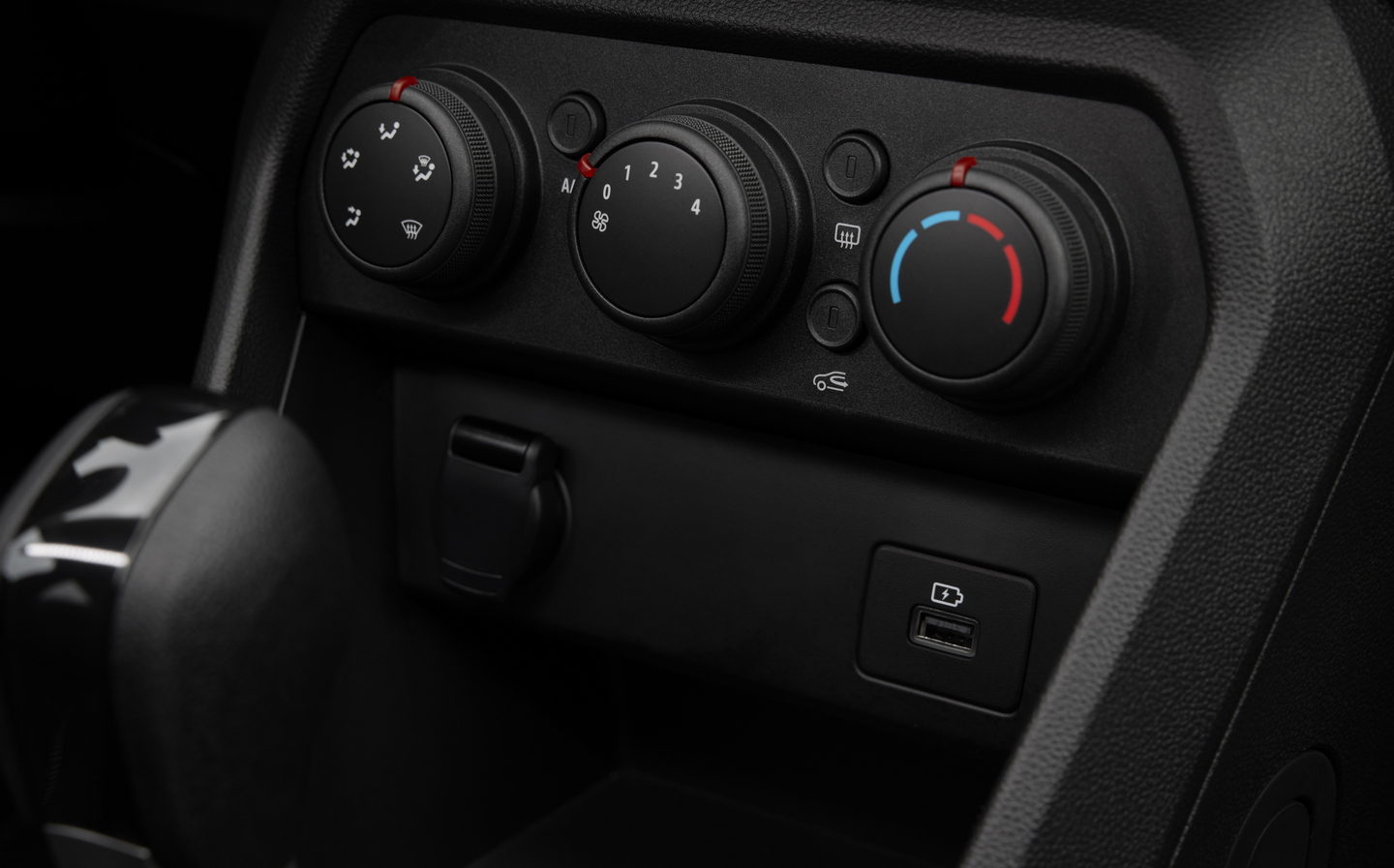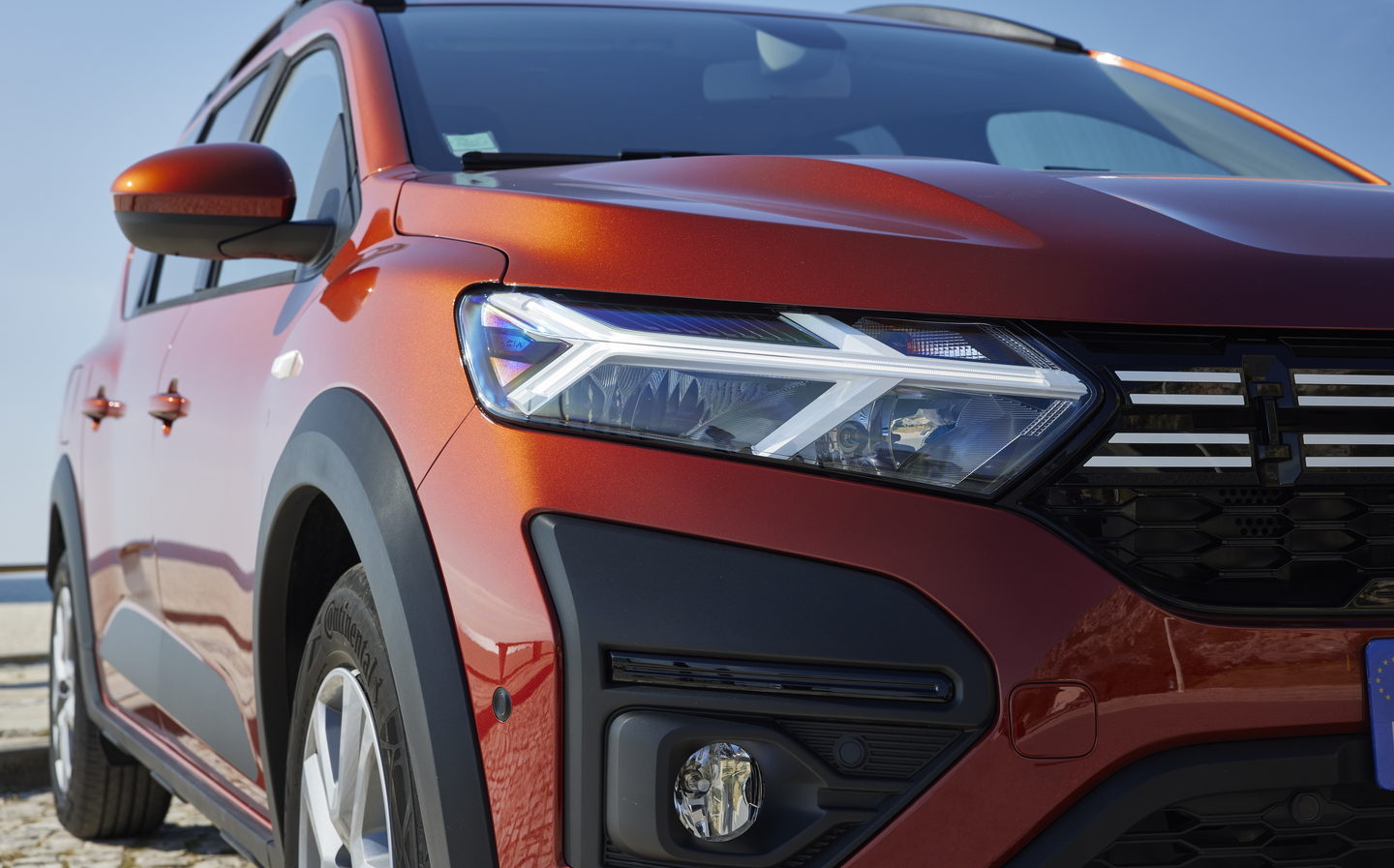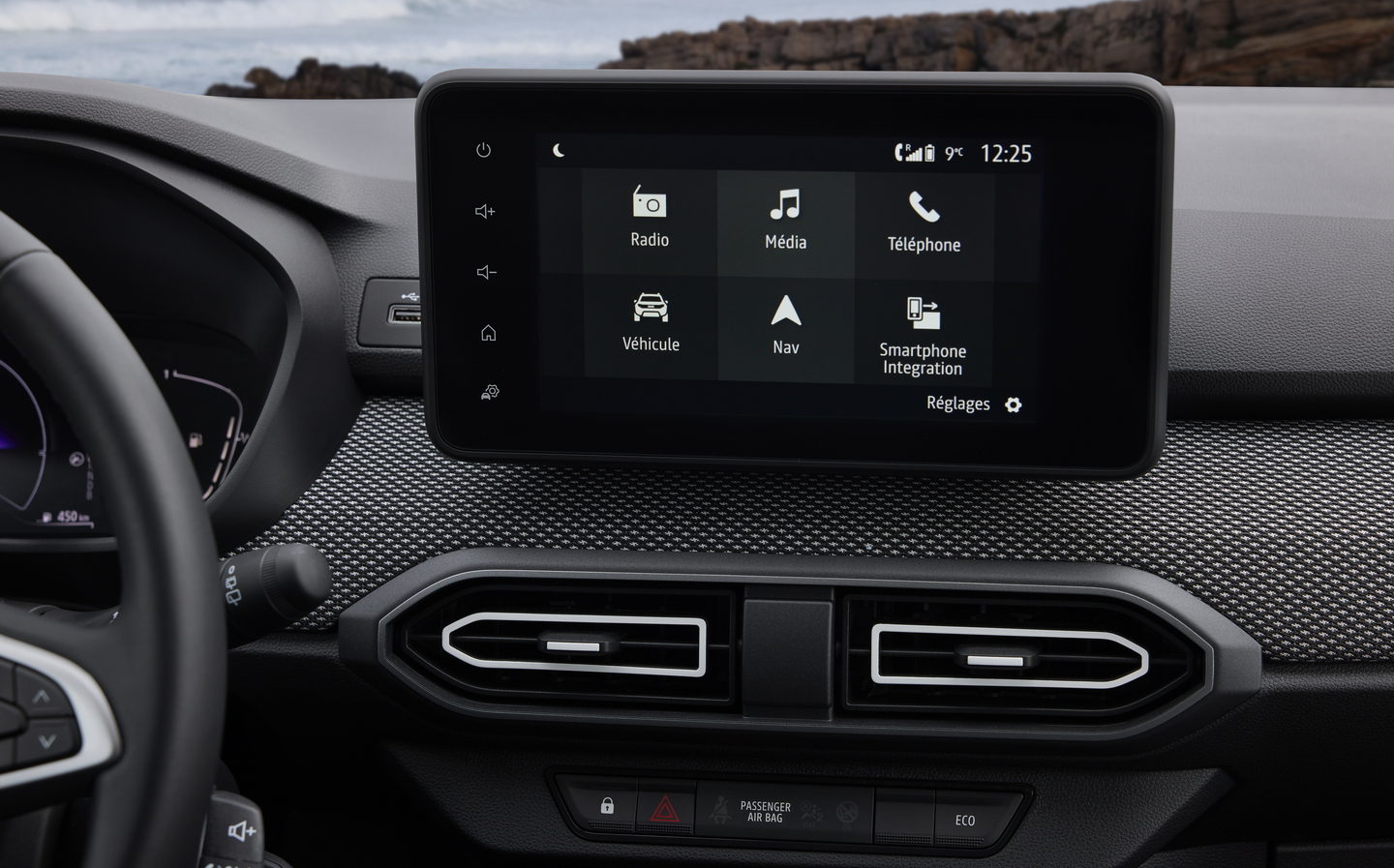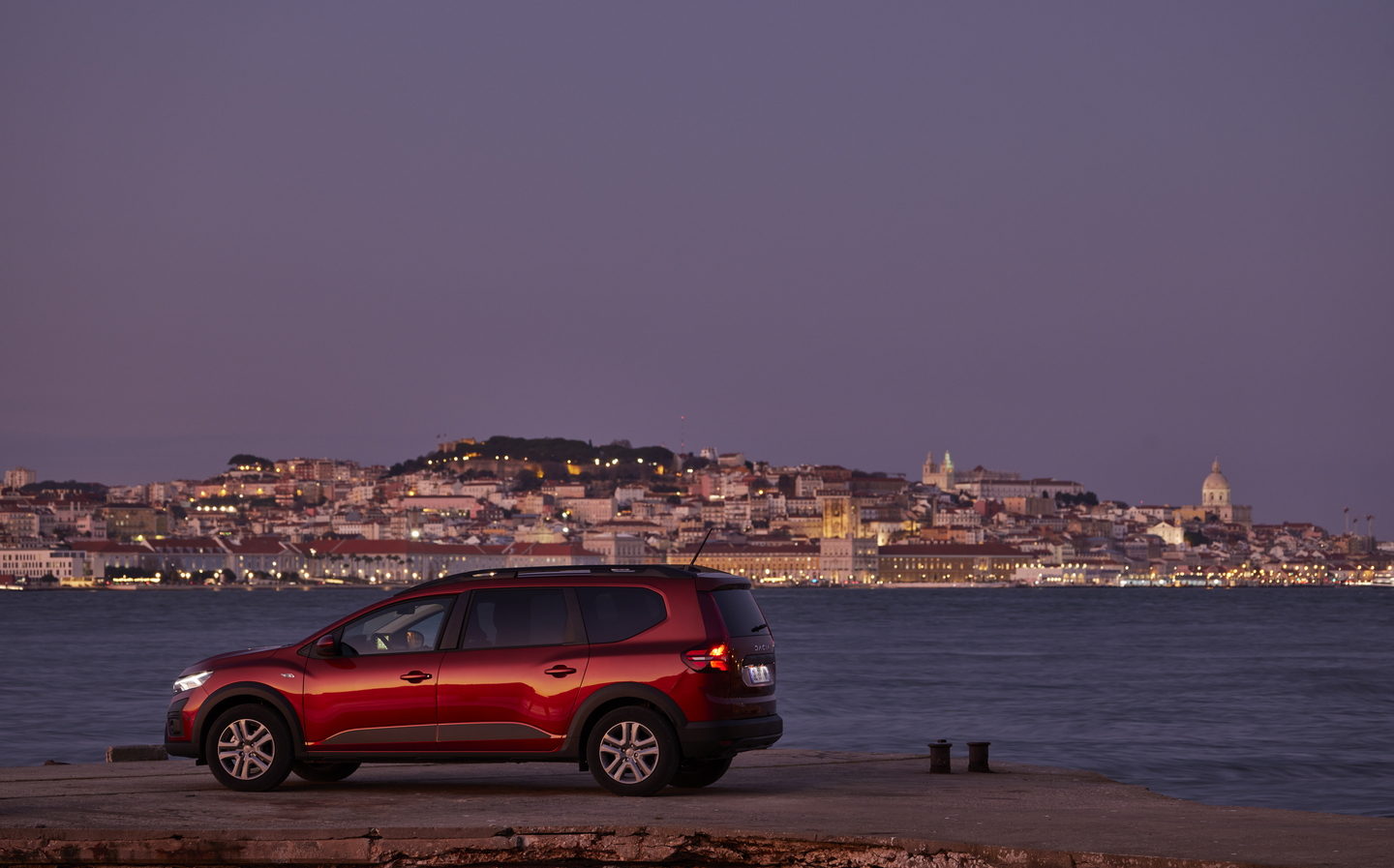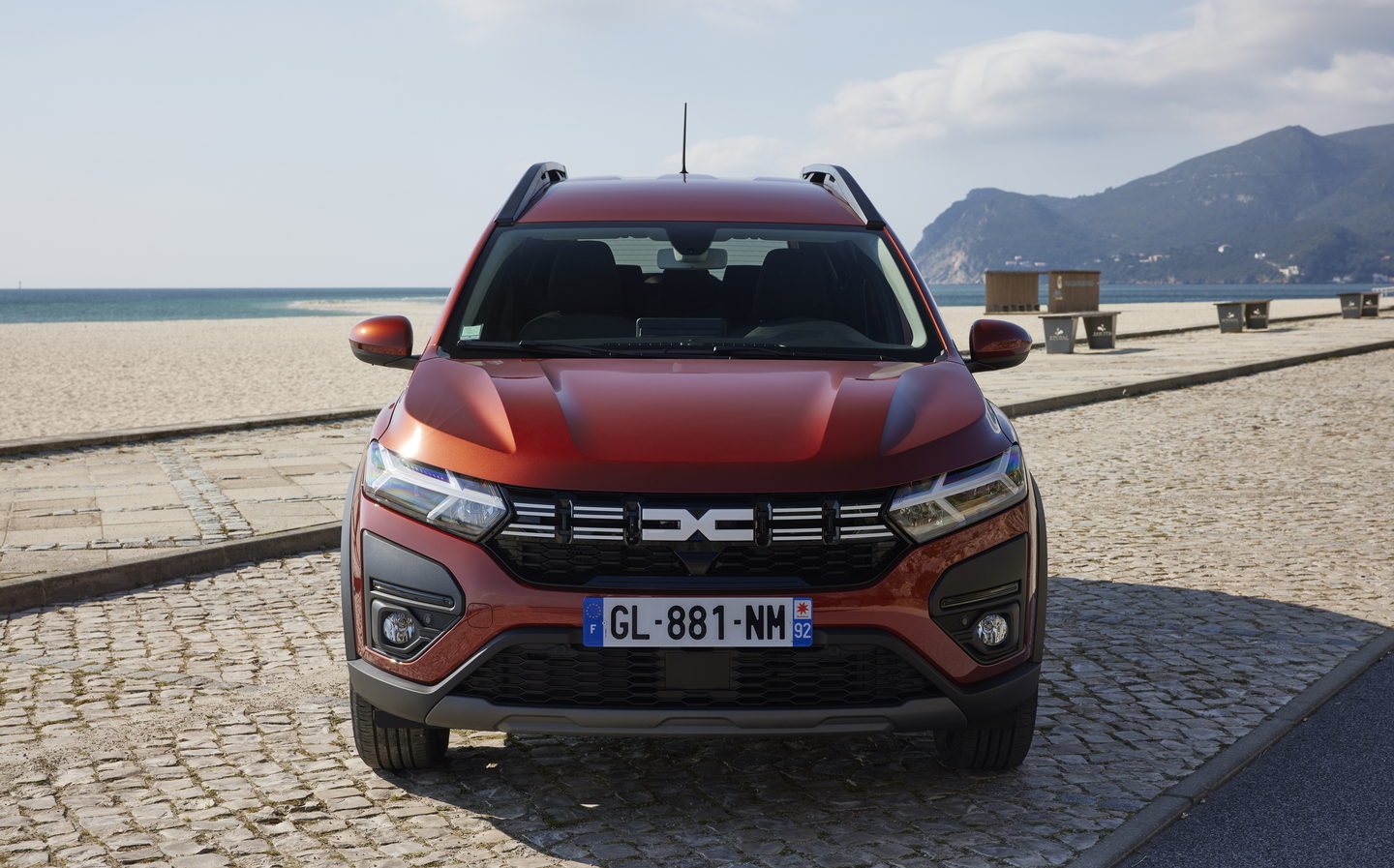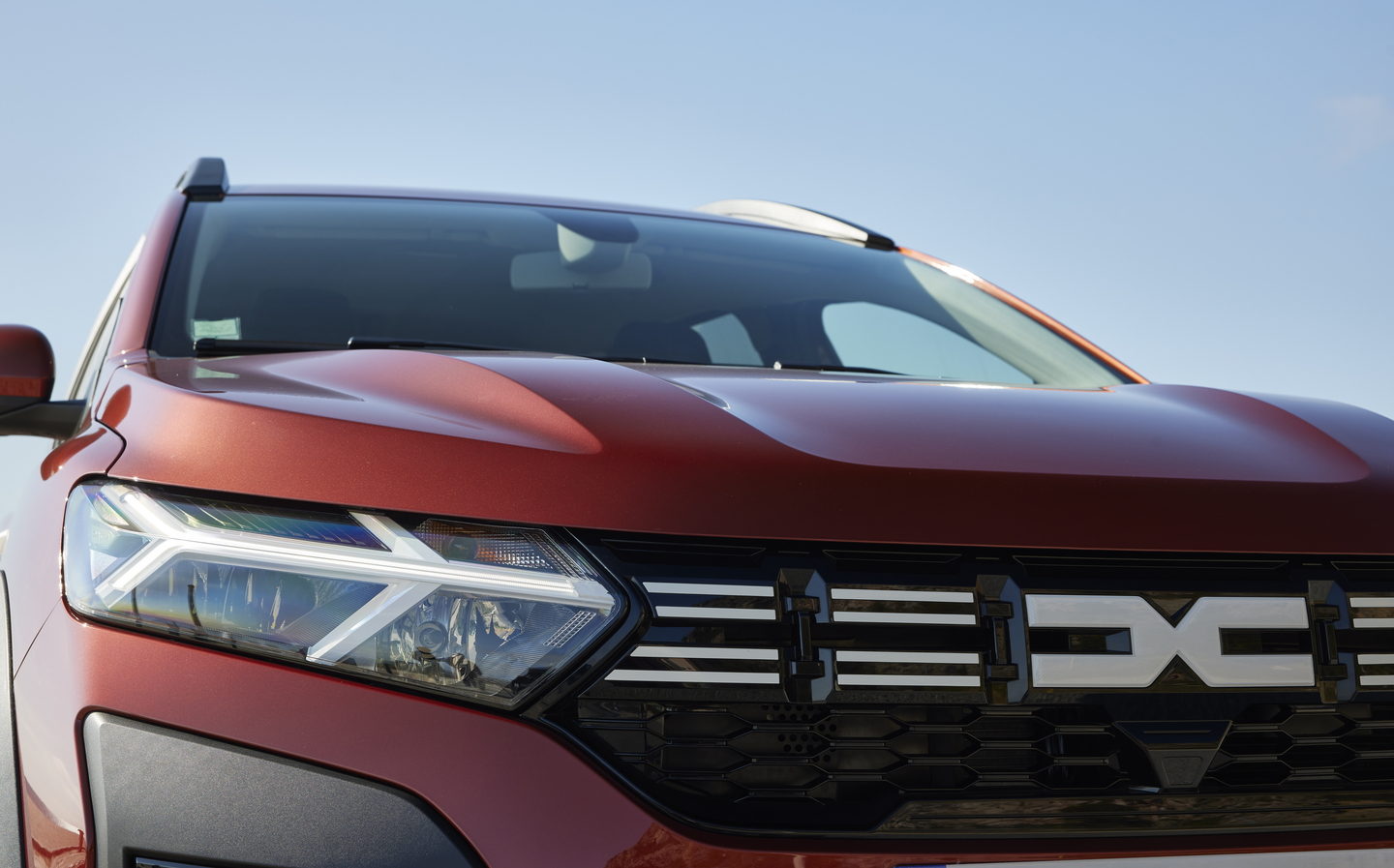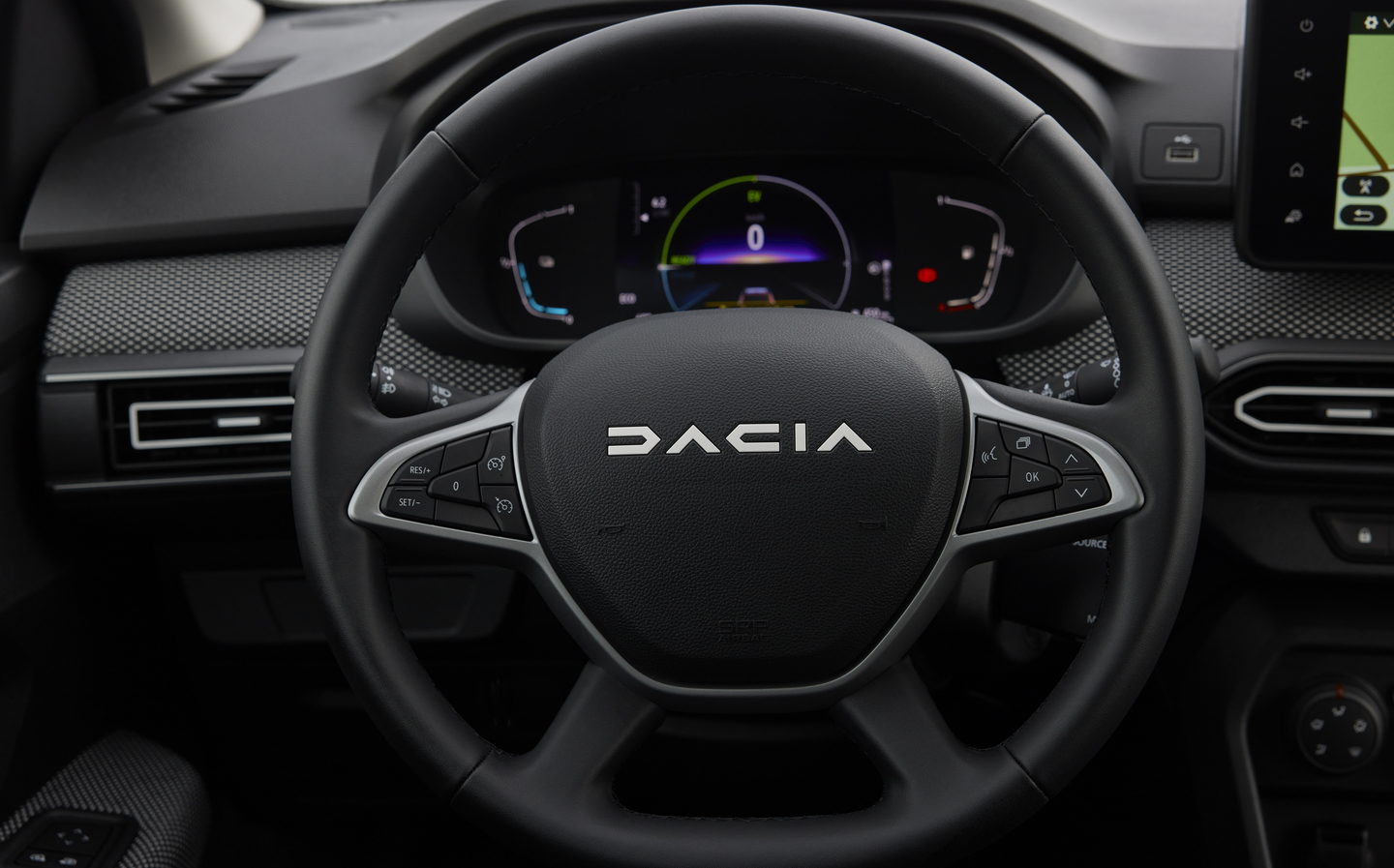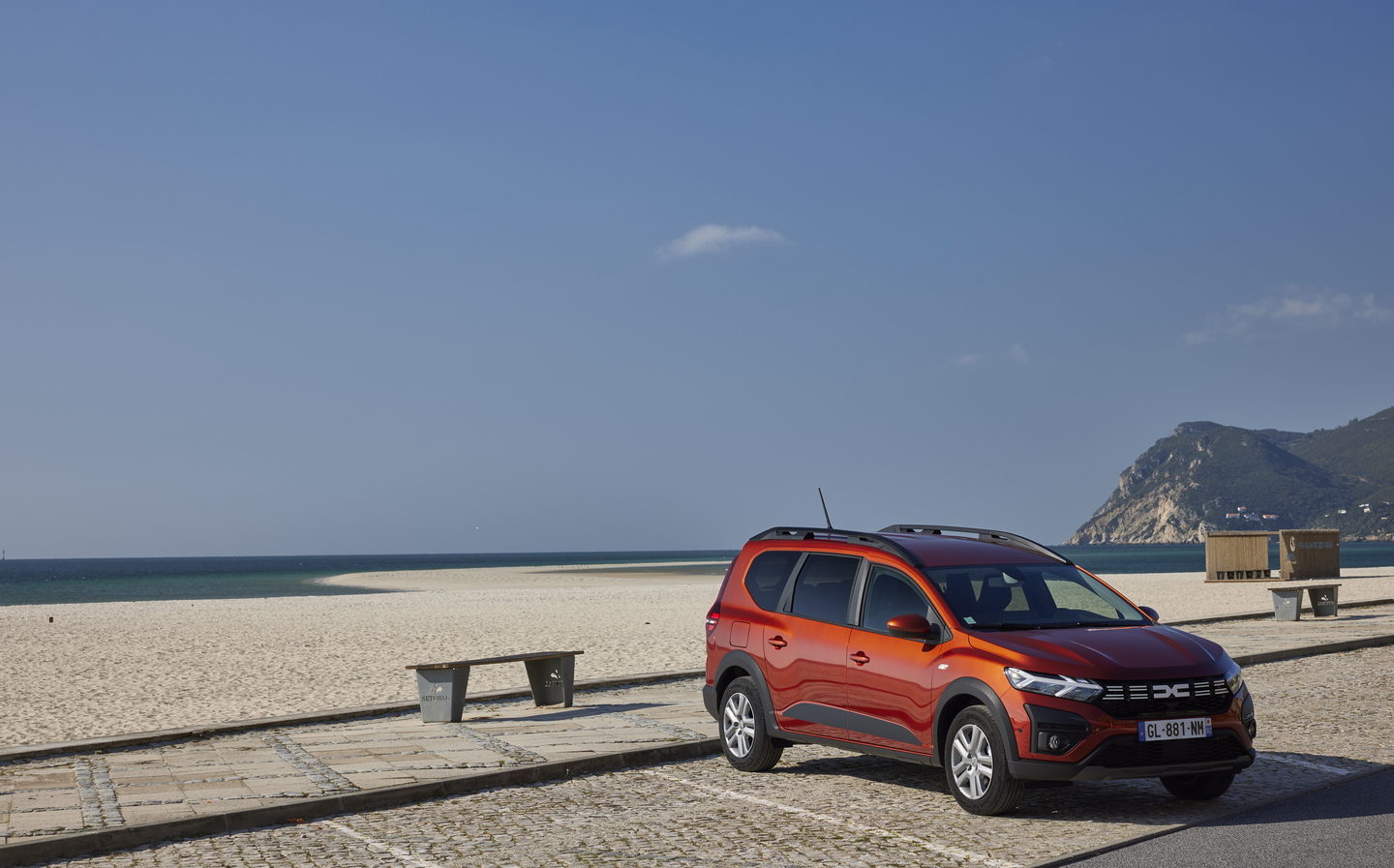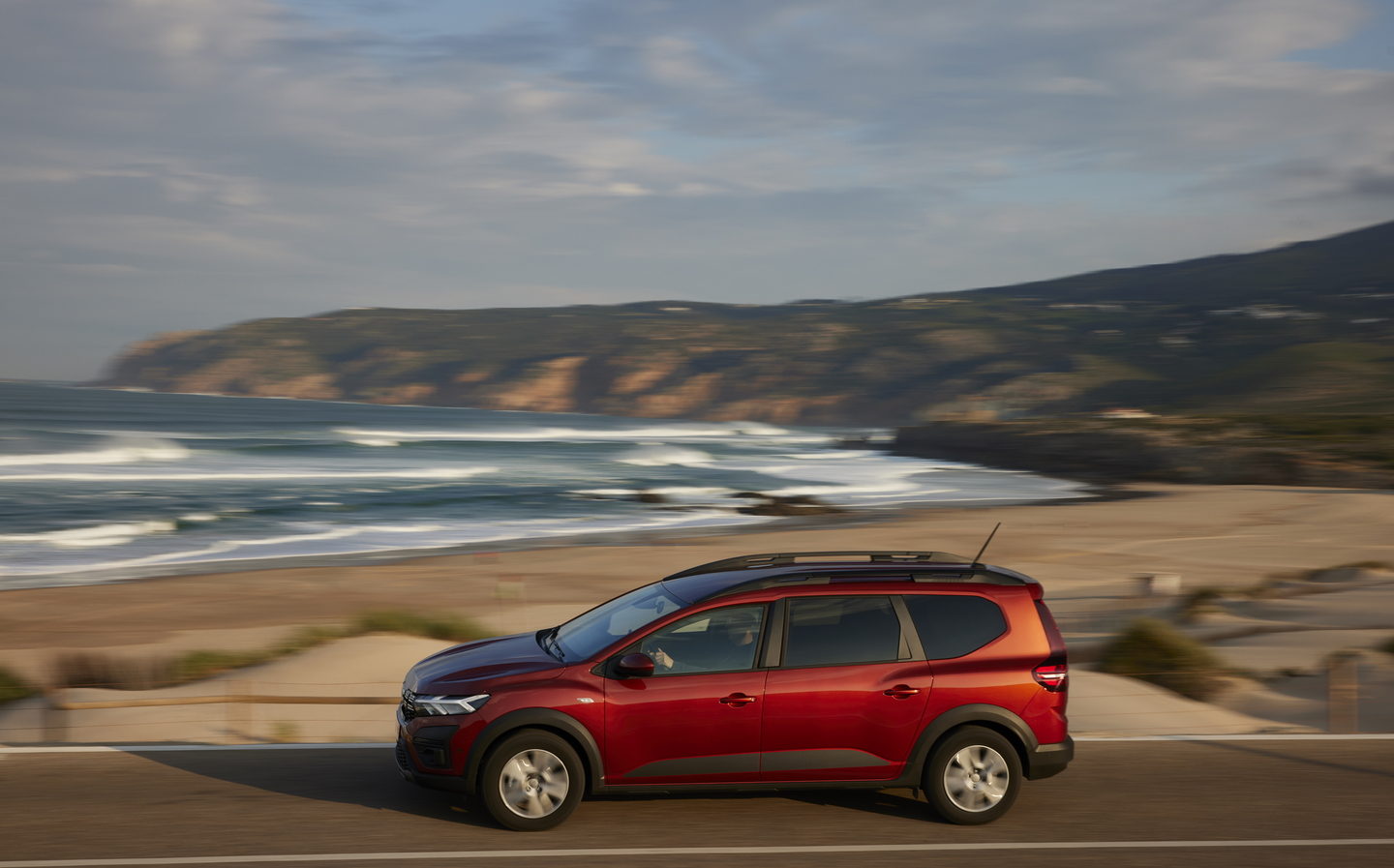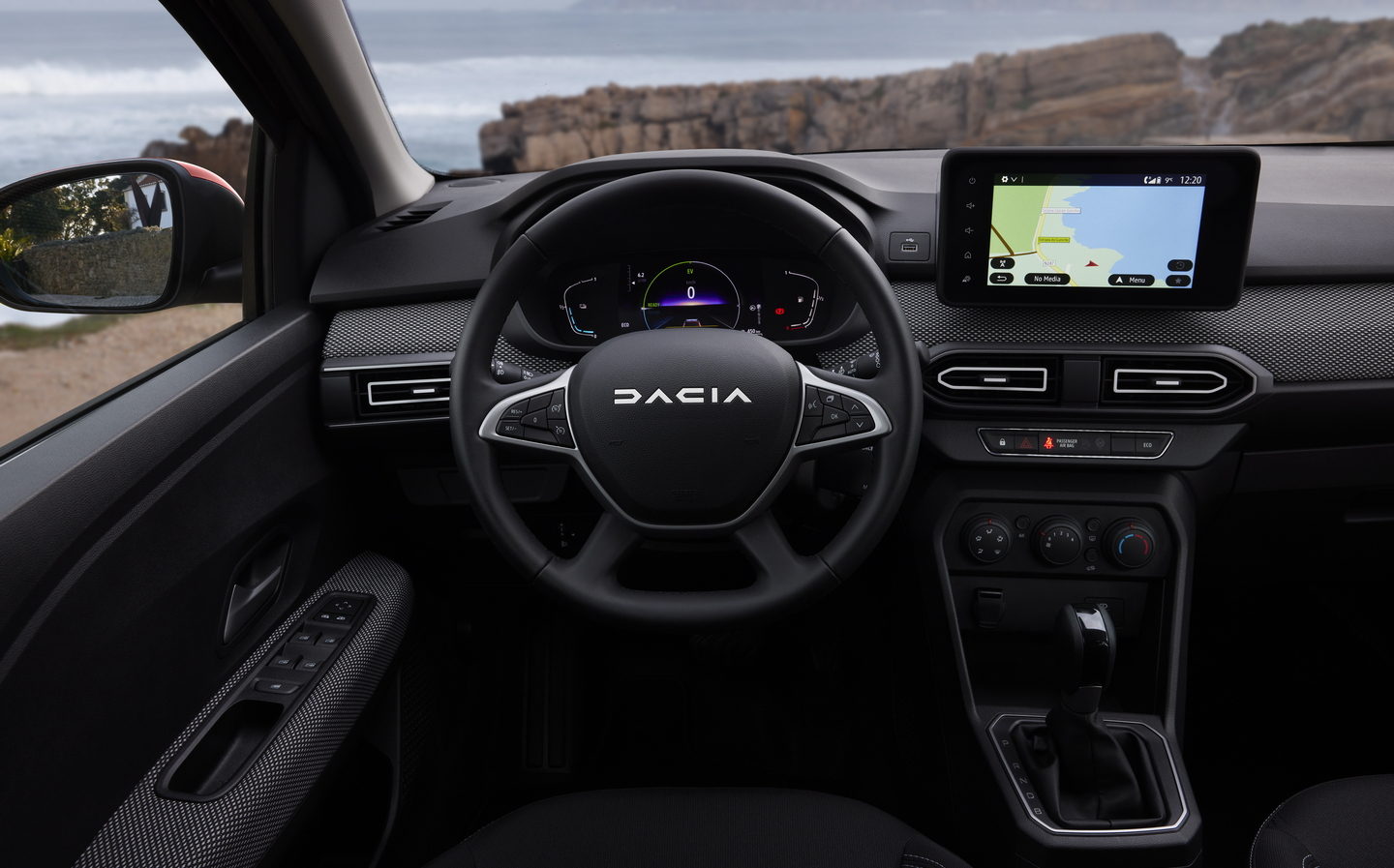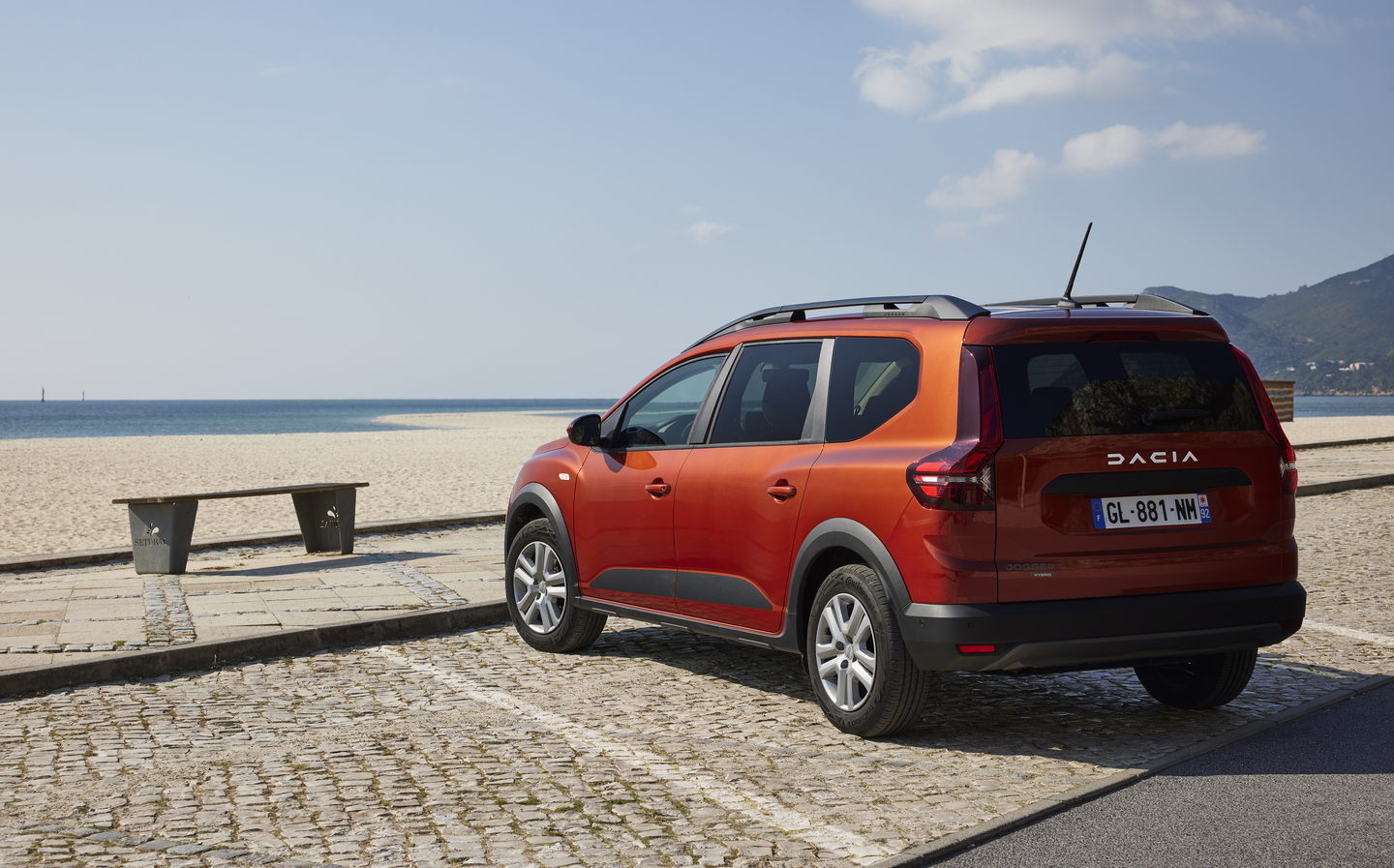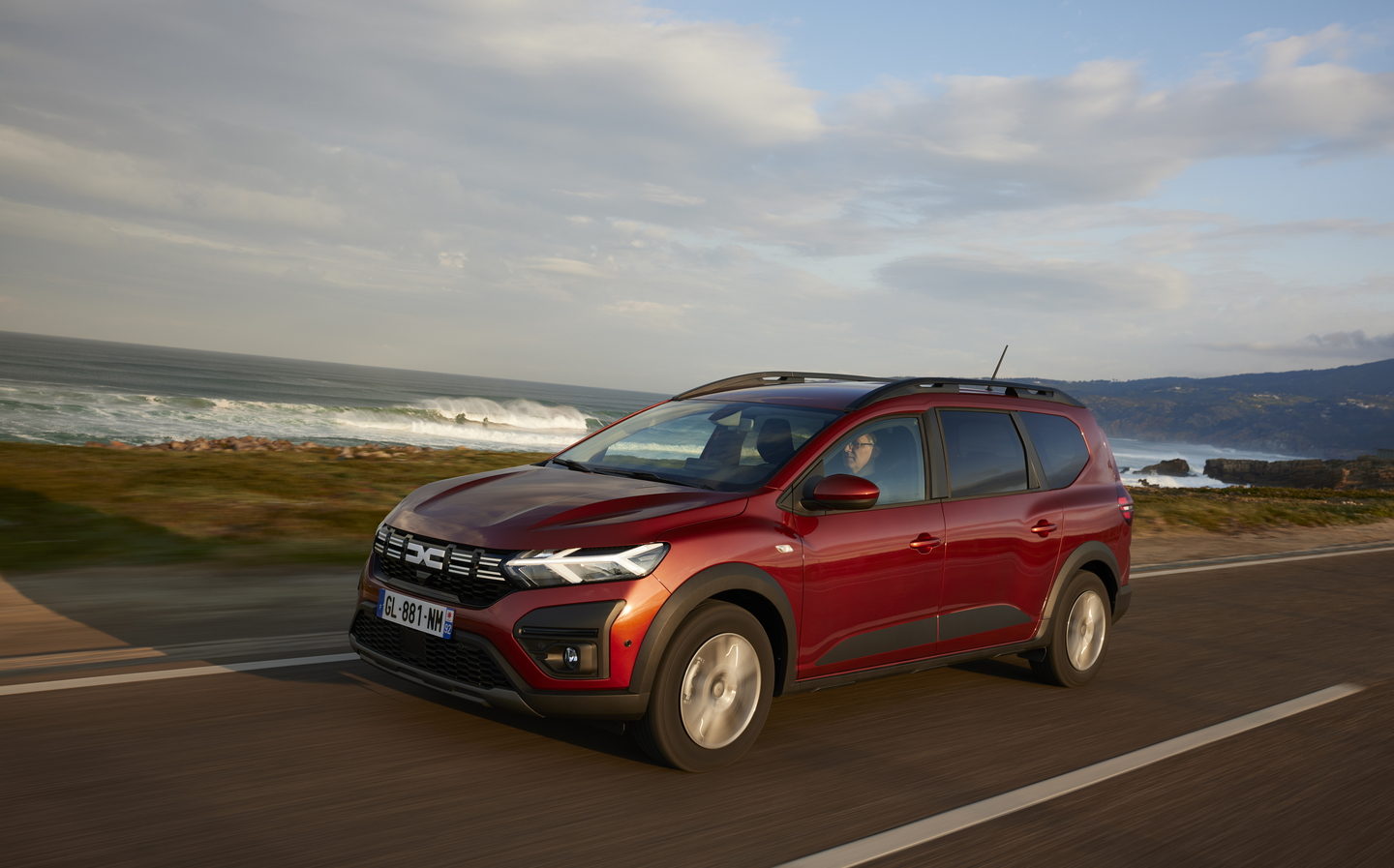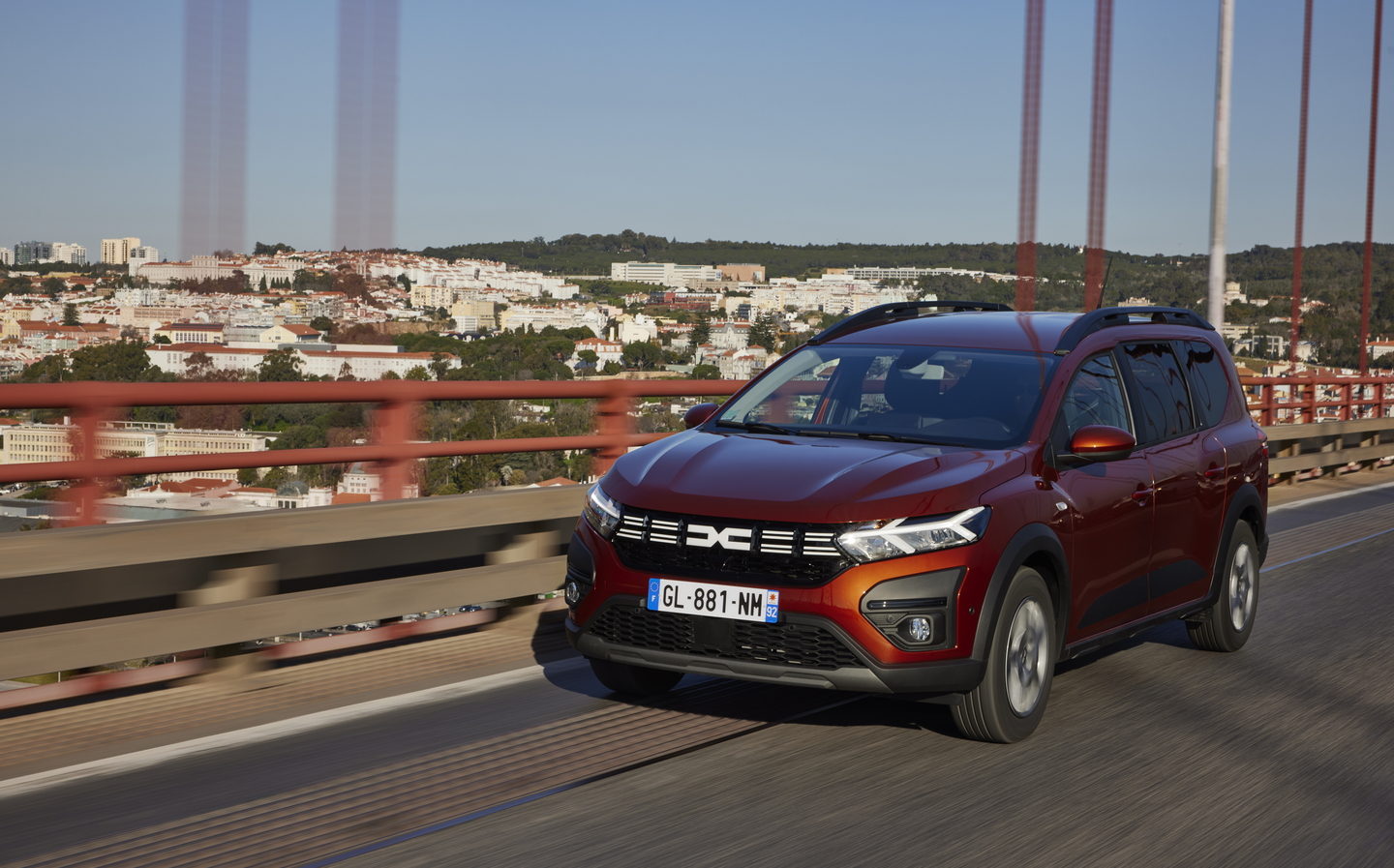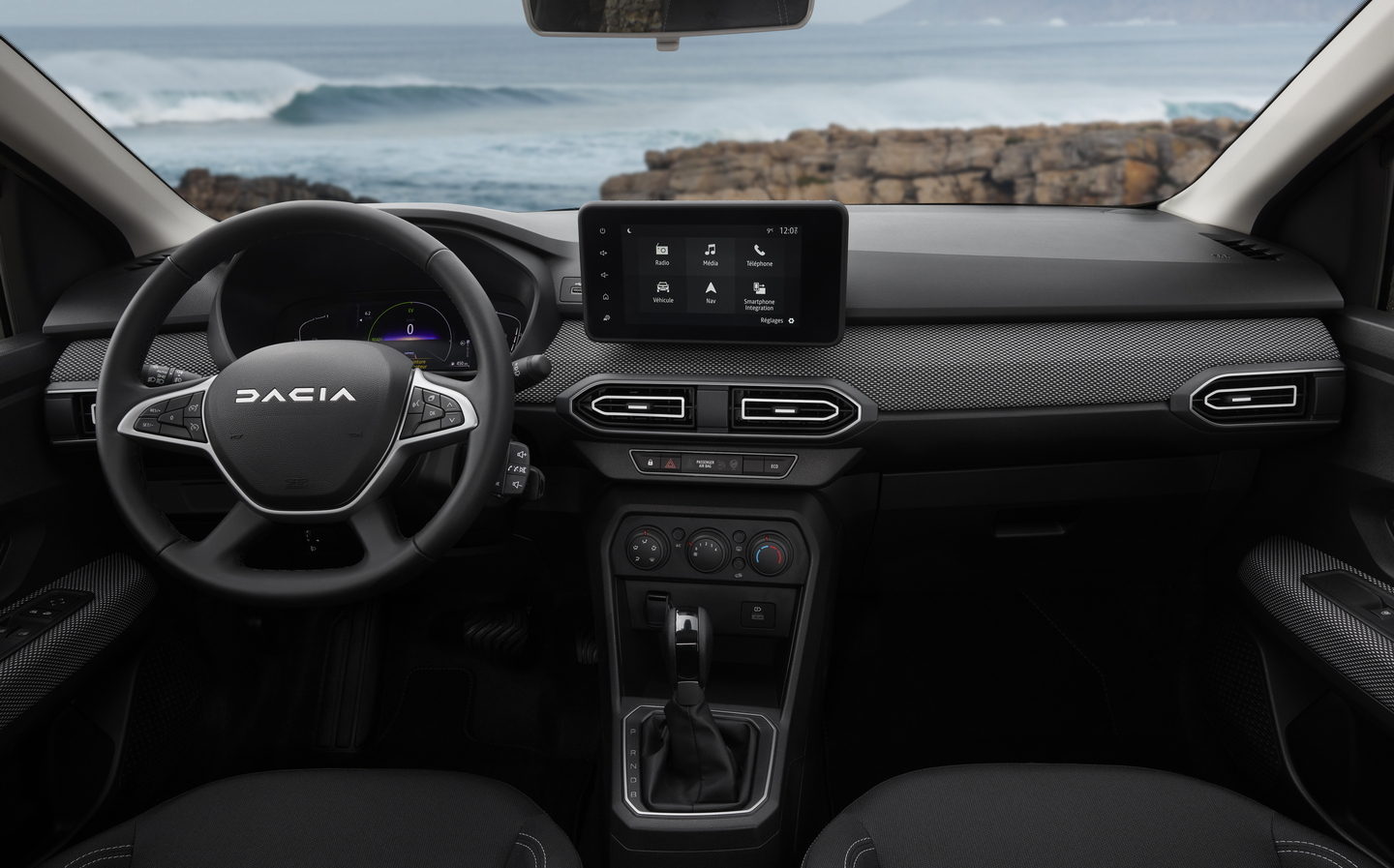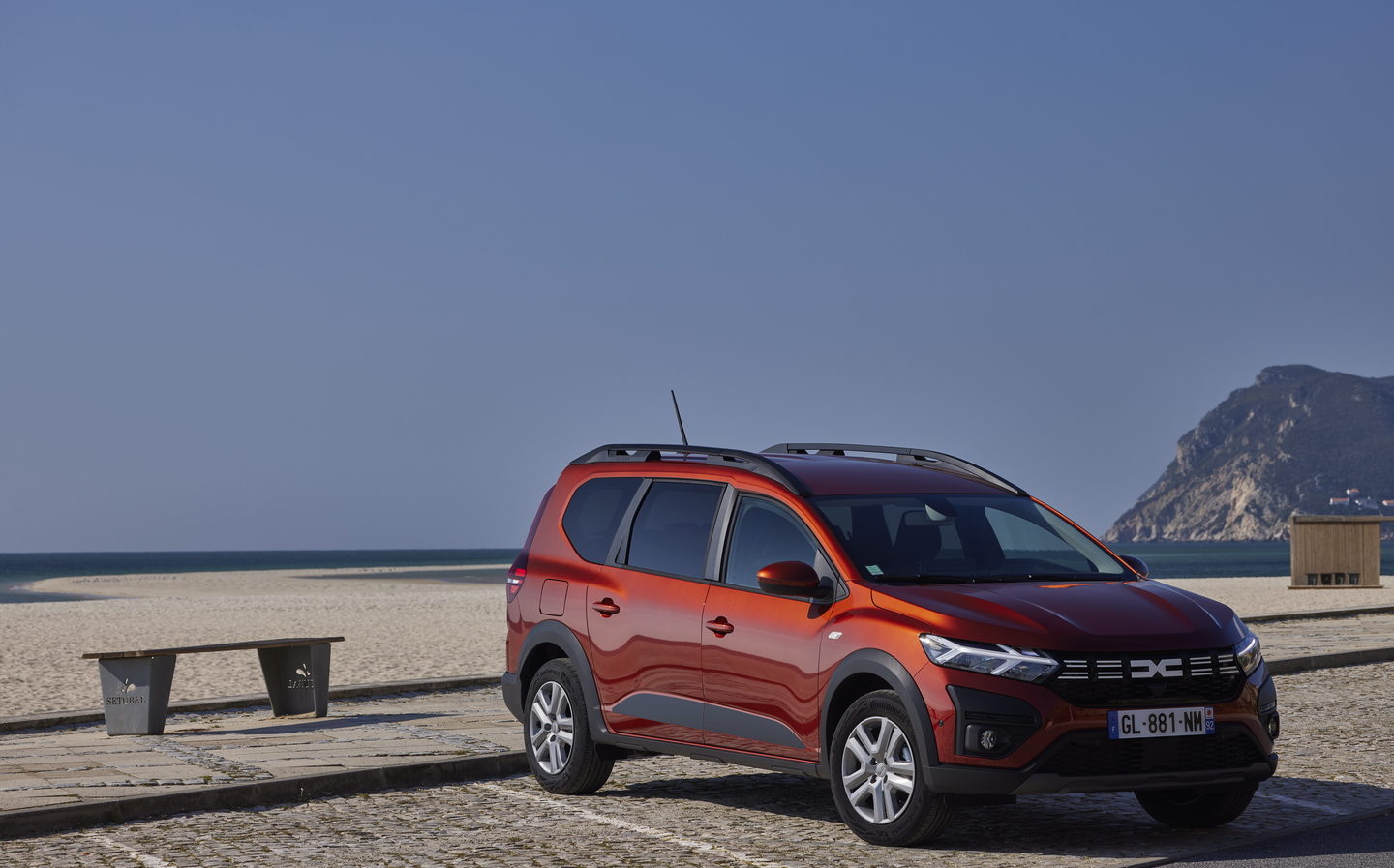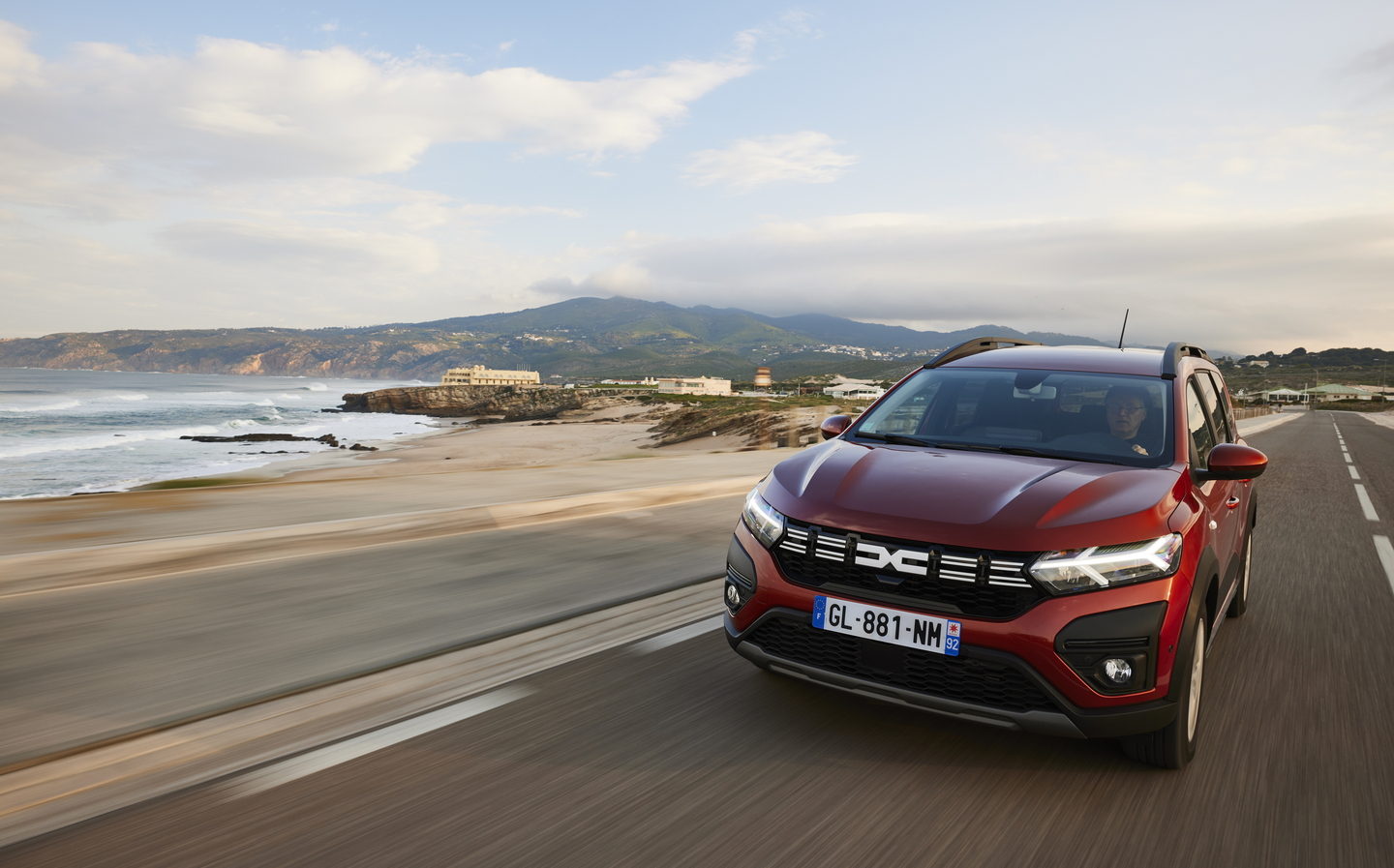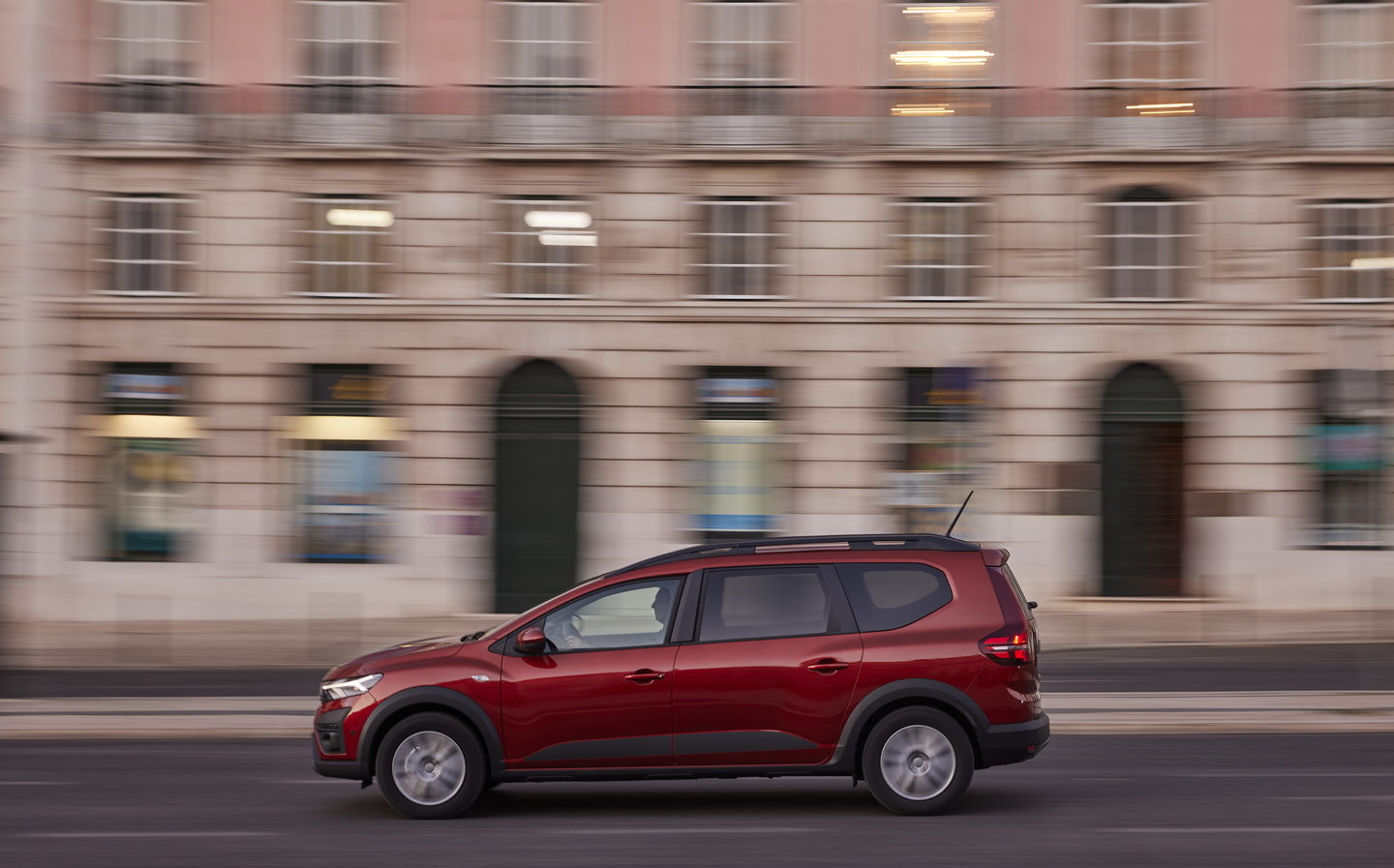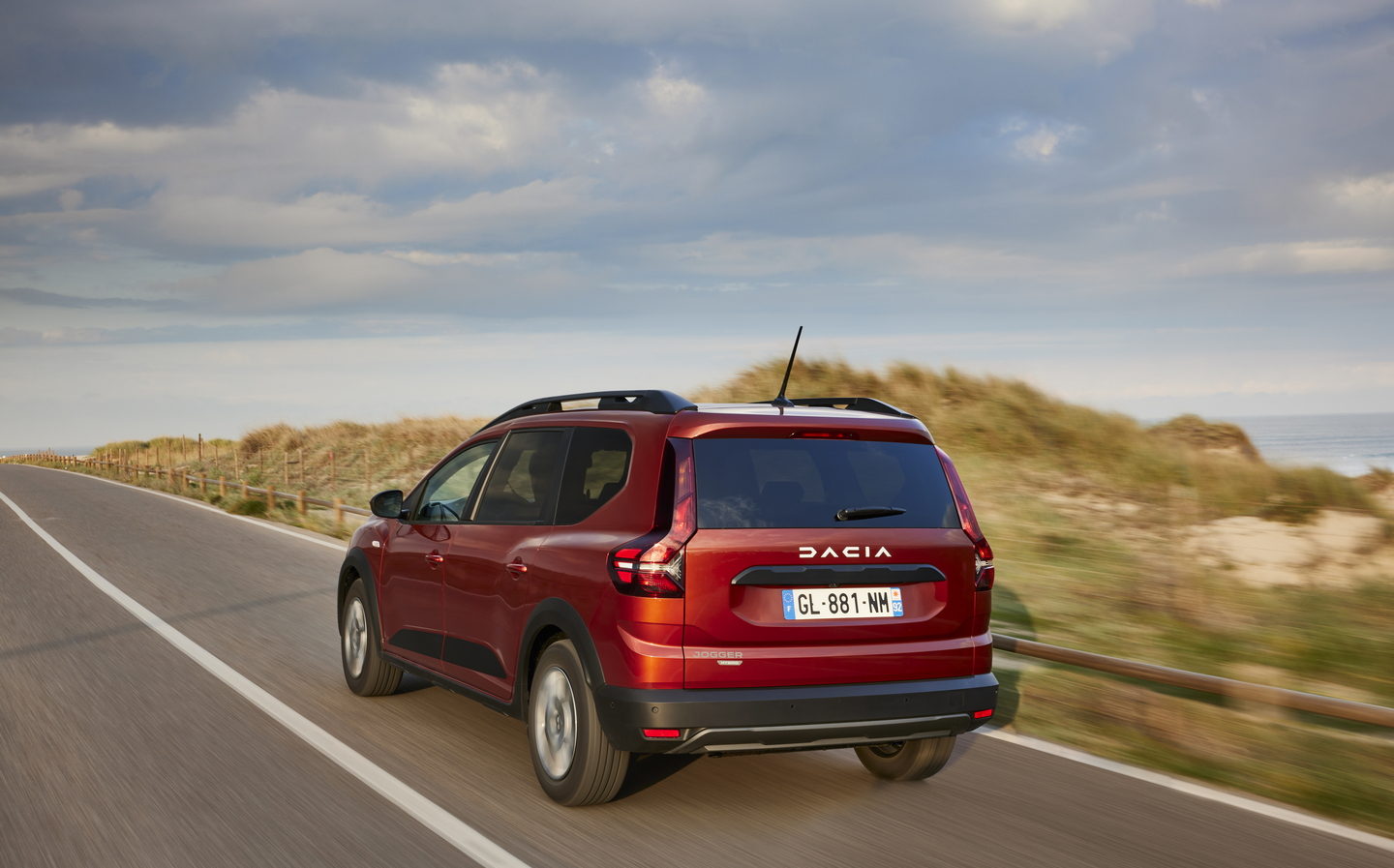Dacia Jogger Hybrid 140 2023 review: The seven-seat alternative to an SUV goes petrol-electric
Works smarter, not harder
Dacia’s new Jogger Hybrid might just be the most sensible car on sale today, and that’s not meant as some veiled insult. You see, if you want to buy a seven-seater, your choices are limited to expensive and increasingly socially unacceptable SUVs or boxy, van-derived MPVs (what we used to call “people carriers”) that aren’t exactly the most appealing prospect to the image conscious.
The Jogger comes at it from a different angle, offering an estate car body style that ticks the practicality box with a third row of seats that even adults can fit into — not something many so-called seven-seat SUVs can manage — and now Dacia has added a hybrid version into the mix.
Exterior design and rivals
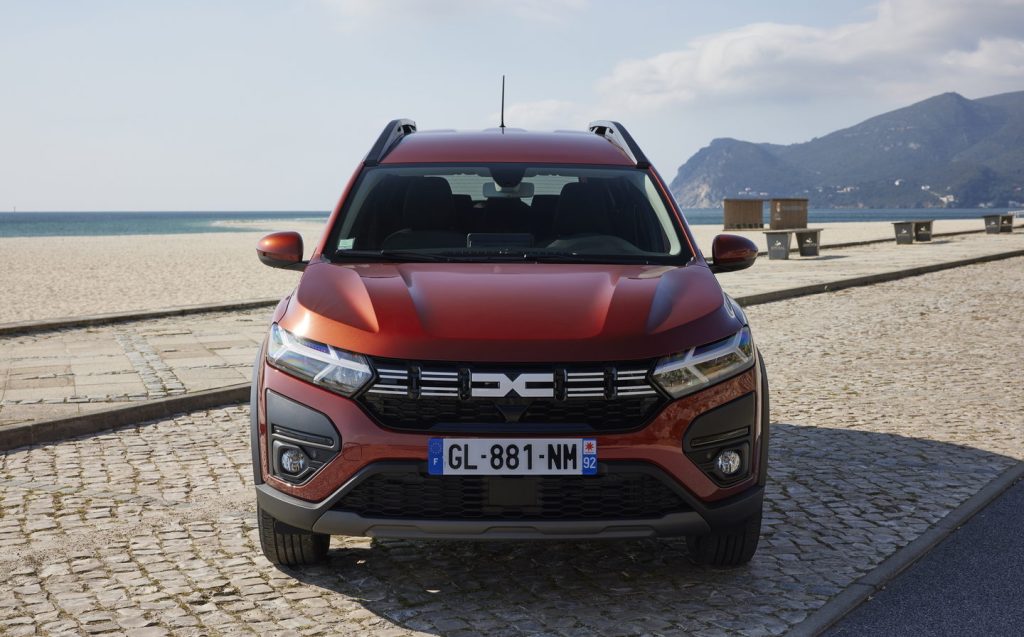
There’s something refreshingly straightforward about the look of the Dacia Jogger. Its designers have taken what is quite a boxy silhouette and added enough curves in the right places to make it visually arresting.
It features many attributes that buyers seem to desire in SUVs, such as chunky protective cladding and a raised ride height.
Yet the Jogger seems to accommodate these things without being outwardly offensive or imposing. Spend a little extra on the Extreme SE spec and it gains 16in black alloy wheels, gloss black door mirrors and a matching ‘shark-fin’ antenna on the roof.
The Jogger Hybrid also features the Romanian brand’s new logo on its grille, finished in a distinctive gloss white to make it stand out. It’s part of a new corporate identity designed to make the brand appeal to fans of adventure and the outdoors.
With that in mind, Dacia includes some smart solutions — such as the roof rails. These can be unlocked and swivelled through 90 degrees to form the cross bars needed to carry a bike rack or roof box. When they’re not required, they can quickly turn back into roof rails, reducing drag, effort and the chance of aftermarket roof bars that whistle as you drive.
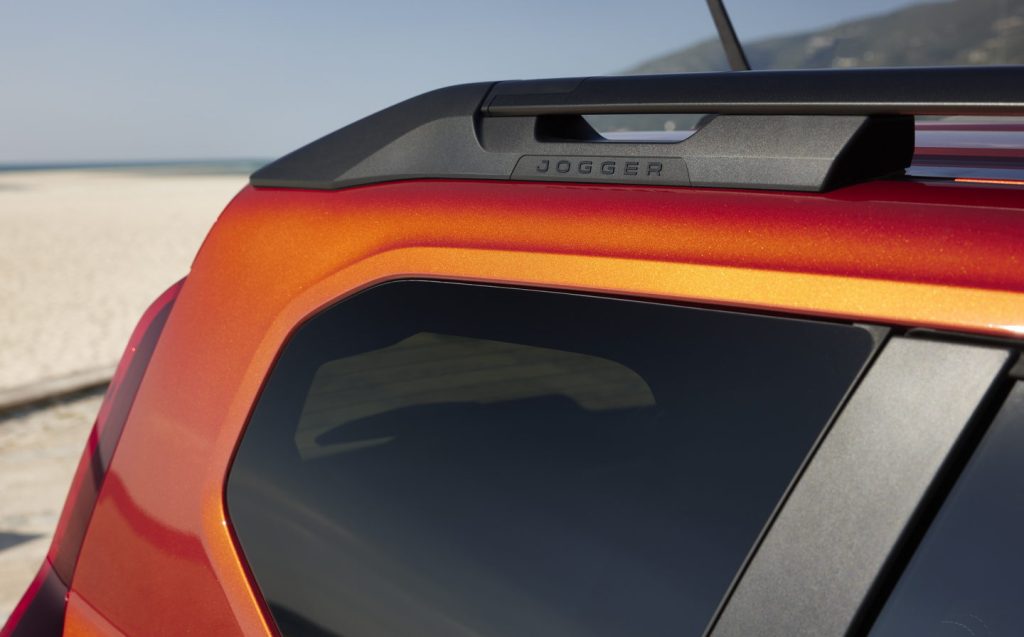
In terms of other new estate cars to rival the Jogger, the Toyota Corolla Touring Sports Hybrid, Vauxhall Astra Sports Tourer, Peugeot 308 SW and Skoda Octavia Estate might be considered competitors, but all are considerably more expensive and only seat five.
As a leftfield alternative there’s a pure-electric MG5 EV, which would save on fuel bills and emissions but is still the best part of £7,000 dearer to buy, and again is lacking in the seats department to the tune of two.
Interior and practicality
If there’s one main reason to buy the Jogger Hybrid, it’s for the generous interior space and its seven-seat layout, so don’t expect a premium interior. But having said that it’s not bargain basement, either.
The dashboard is laid out simply and rather functionally, with physical controls for temperature adjustment, for example. The cruise control settings (yes, cruise control) are on the multifunction steering wheel. An irritation is that the volume controls are still mounted on a stalk just behind the wheel, as on Renaults of old, which makes them hard to see.
Despite the plastics being of the hard-wearing (scratchy) variety, most surfaces have a solid feel. You don’t get much colour inside, but the fabric mesh panel across the dashboard fascia is a welcome touch.
There is a good range of adjustment of the steering wheel and seat, too, so finding the ideal driving position is easy, and outward visibility is good in all directions.
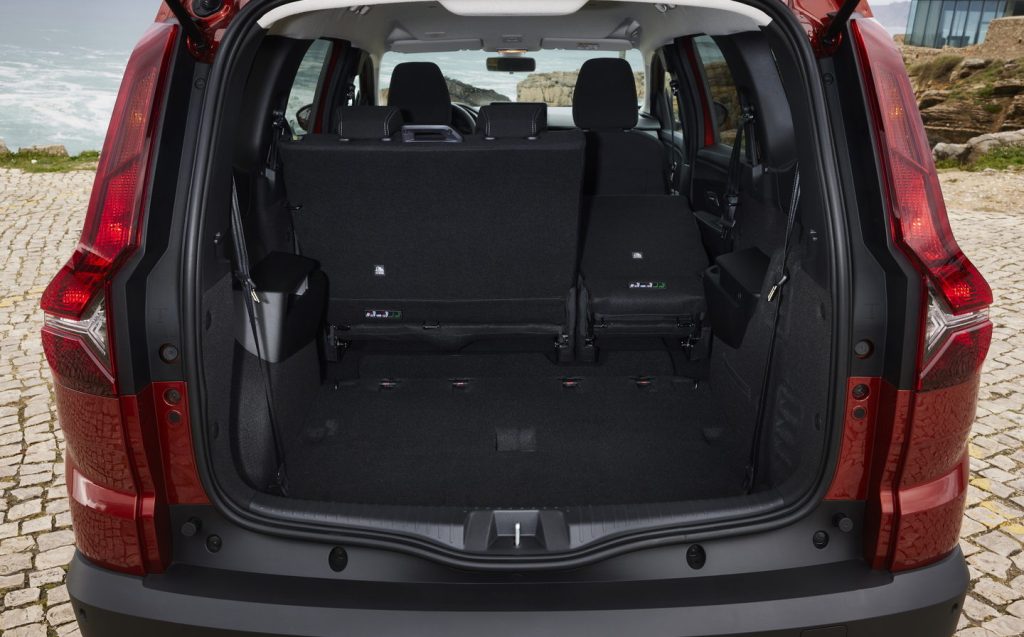
Passengers in the rear won’t have much to complain about, either. The middle row provides generous levels of kneeroom and headroom thanks to how the roofline kinks up behind the front doors. A 60:40 split in the bench seat allows for numerous configurations depending on your requirements, and either seat will tumble forward to allow access to the third row.
These rearmost seats give the Jogger an edge over many other seven-seaters as most adults can fit into them without feeling like they’re being folded up into a suitcase, though the tallest won’t want to spend too much time back there.
Equally impressive is that even with all seven seats in use, there is still more than 200 litres of boot space behind, which is enough for some smaller luggage. If you need to carry bulkier items, the third-row seats can either fold down or be removed entirely without the need for any tools — and they only weigh around 10kg each. Doing so will leave you with a spacious five-seater and 699 litres of cargo volume.
Technology and safety
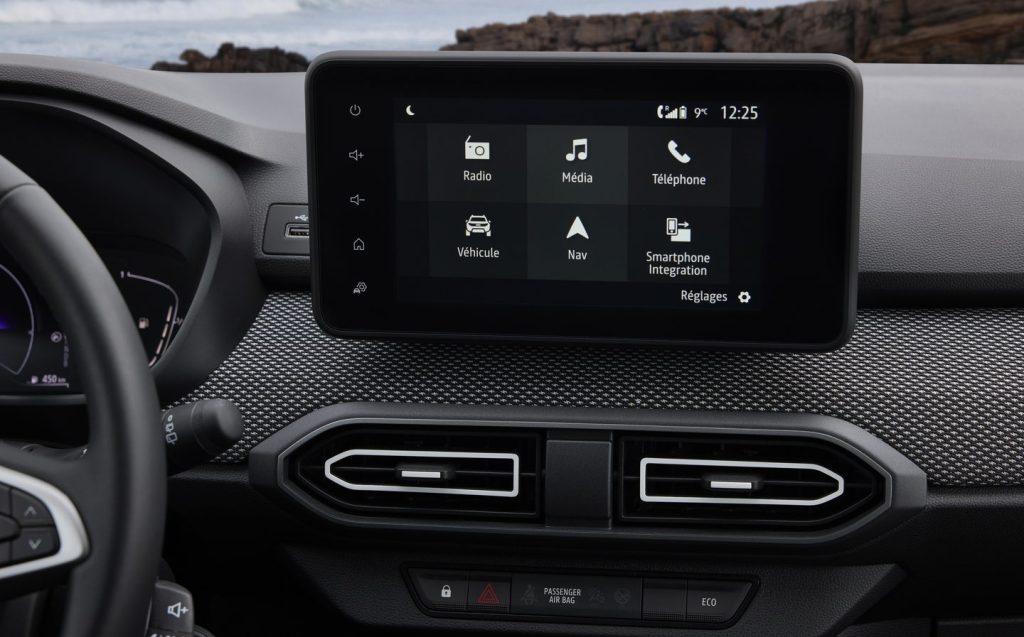
When Dacia first arrived in the UK ten years ago, one of its talking points was offering a car without a radio to save costs. Things aren’t quite so spartan these days inside, with the Jogger Hybrid getting a 7in digital instrument cluster in front of the driver as standard. Flanked on either side by battery and fuel level indicators, the display is a simple affair that indicates whether the wheels are being powered by petrol or electric, and if the battery is being topped up on the move.
Instead of the smartphone cradle that appears on entry-level Joggers, all Hybrid models are fitted with an 8in touchscreen display. The menu system is on the basic side but there’s Android Auto and Apple CarPlay as standard, so mirroring your smartphone for music or maps is simple.
When you upgrade to the Extreme SE, the infotainment system gains built-in navigation, which could be seen as irrelevant if you rely on your smartphone for mapping, but that upgrade does also include heated front seats, an additional USB port and six speakers.
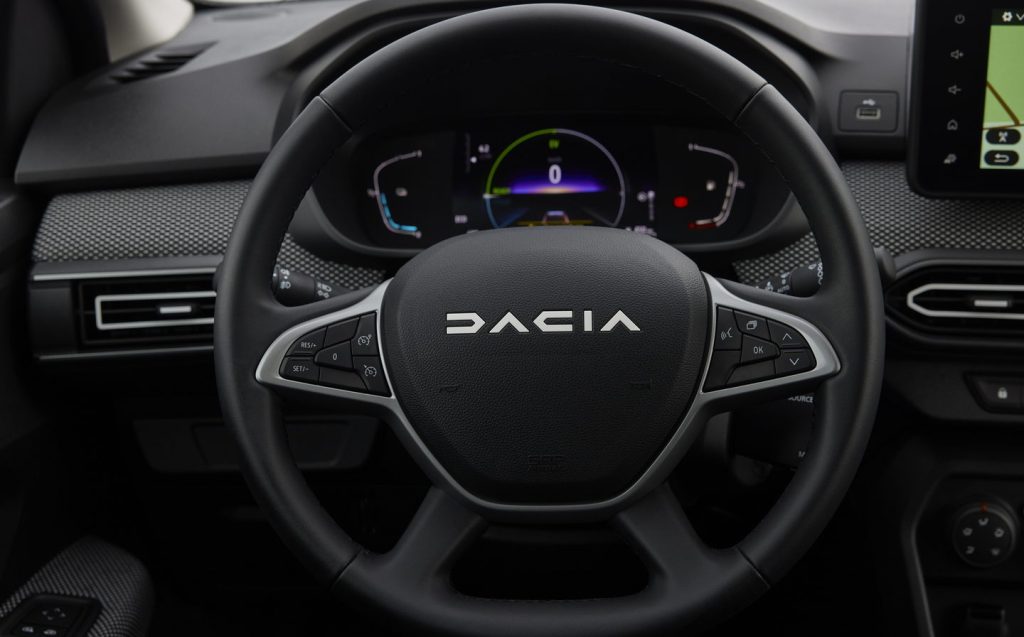
The elephant in the room for the Jogger is the fact that it grabbed the headlines at launch for only securing a one-star safety rating in its 2021 Euro NCAP test. But don’t be put off, necessarily: that score was primarily down to it not having some of the more advanced driver assistance systems of other brands, which Dacia chose to omit to maintain affordability.
Standard safety equipment includes six airbags with curtain and side airbags, automatic emergency braking, blind-spot detection and hill-start assist to make moving away that bit easier and safer.
And all Jogger Hybrids also come with a reversing camera and rear parking sensors.
Performance, power output and acceleration
Not only does the Jogger Hybrid 140 slot in as the most powerful model in the range, it is also the most economical on paper. The hybrid system is similar to what Renault uses in the Clio, featuring a 1.6-litre four-cylinder petrol engine and a 36kW electric motor. The latter gets its energy from a compact 1.2kWh battery that is located in the rear of the car beneath the third row of seats.
The hybrid system has a maximum power output of 138bhp, so performance is modest, with the Jogger taking 10.1 seconds to get up to 62mph from a standstill. A 103mph top speed is more than adequate for such a car.
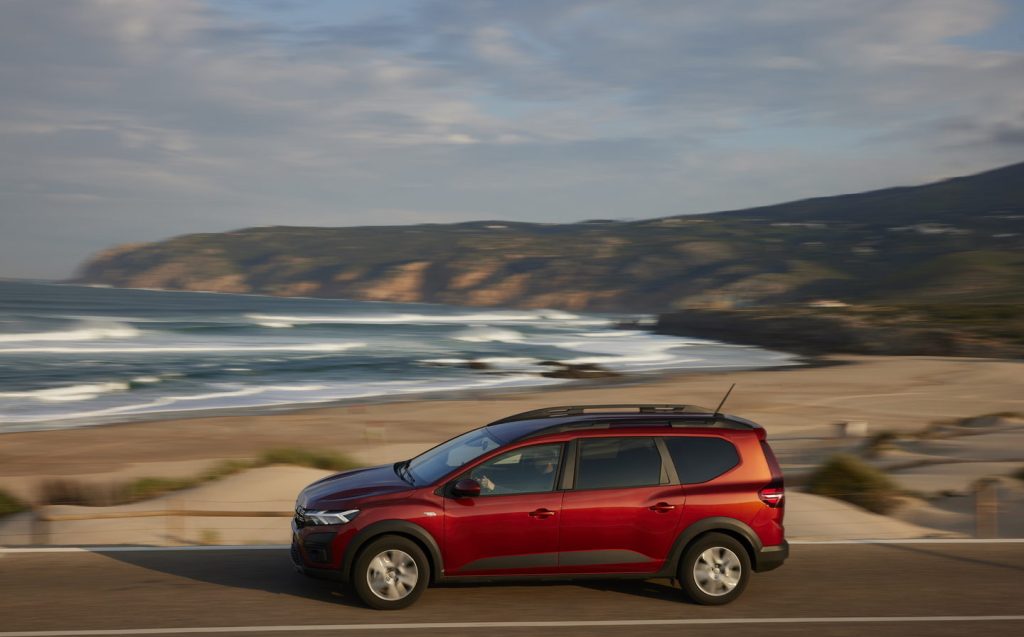
At slower speeds, the engine frequently switches off to reduce fuel consumption and emissions, and it will cover a fair amount of ground using only the electric motor. So long as you’re gentle with your throttle inputs the switching between motors isn’t very noticeable, but the petrol engine can sound coarse under harder acceleration.
Arguably the more relevant figure is the fuel economy, which Dacia quotes as 56.5mpg. That’s the kind of efficiency many would be happy with from a diesel, so that’s a plus in the Dacia’s copybook. And you can trust the figure, too: over a long day of driving through towns, cities, countryside and some motorways, the Jogger Hybrid returned 58mpg in our hands, beating the official average.
Ride and handling
While the Jogger’s front-wheel-drive layout might not give it a huge amount of off-road ability, the exaggerated ground clearance could be useful and it also allows the suspension to be that bit softer, making the Jogger a very comfortable car over all surfaces. Through corners there is plenty of body roll, though it will hold its line and always feels safely surefooted, even when you’re pushing on.
Further to that are 16in alloy wheels that are on the small side by today’s standards. The advantage of this is their generous tyre sidewalls that add more cushioning from potholes, speed humps and other surface imperfections. Shame that there isn’t better sound deadening, as there’s notably high road noise at motorway speeds.
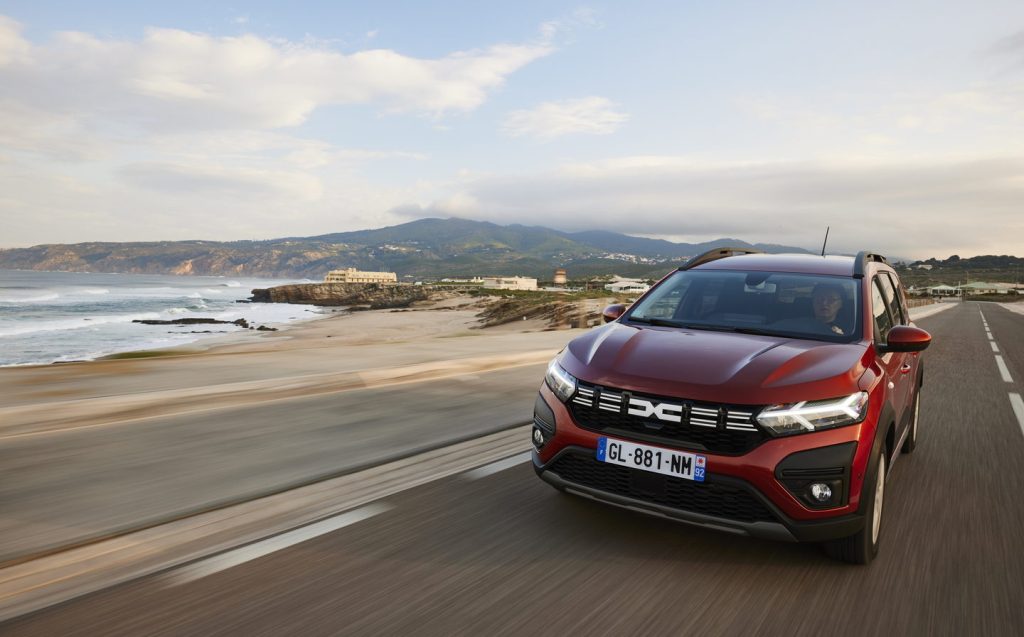
Don’t expect a lot of excitement from driving the Jogger; its steering feel is rather neutral, and it could hardly be described as sporty. But the automatic transmission works reasonably efficiently and there is less elasticity in the gearbox compared to some other hybrids, meaning that when you press the accelerator, the car reacts as you’d expect rather than there being a disconnect between the two.
Pricing and on-sale date
The Dacia Jogger Hybrid is available to order now at a starting price of £22,595. That will get the Expression specification that comes with almost everything you’ll want in the car, and only metallic paint is an option. Spending £23,395 is required to upgrade to the more generous Extreme SE specification.
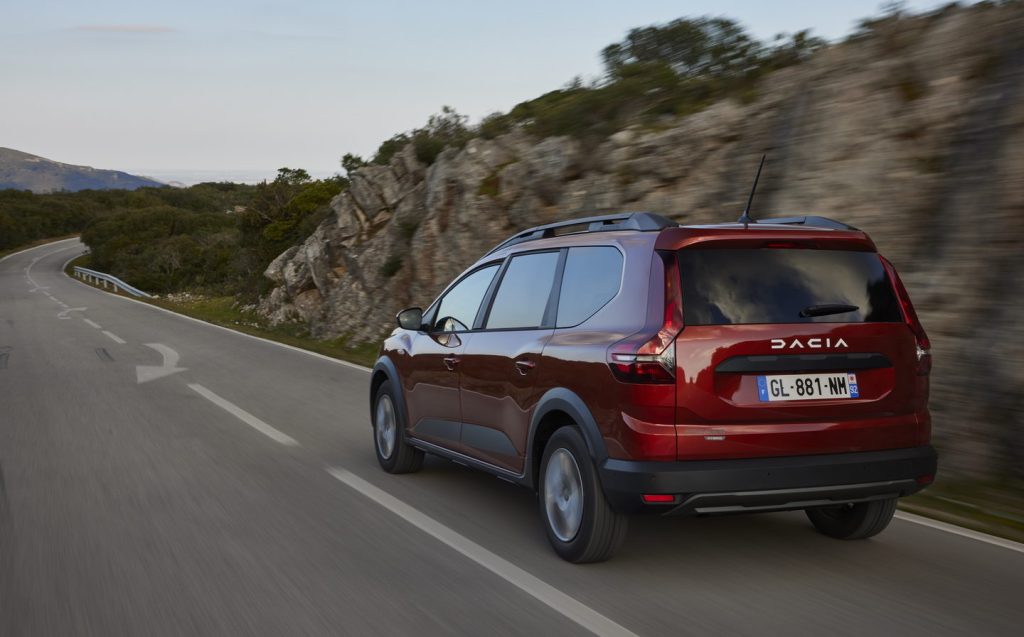
Verdict: Dacia Jogger Hybrid review
With the addition of this hybrid option, the Dacia Jogger becomes even more appealing as a do-anything family car. It is one of the few true seven-seaters that isn’t in the form of a van-derived MPV and may have distinctive enough styling to appeal to those who think SUVs are essential.
With function and form in equal measure, the simple approach to doing things that Dacia employs makes this car more logical and relevant in today’s market than ever before.
Related articles
- After reading our review of the Dacia Jogger Hybrid, you might be interested to read our review of the Toyota Corolla
- Keen to go electric instead? Here are the top 10 longest-range electric cars
- You may also be interested in a review of the new Toyota Prius
Latest articles
- New Renault Symbioz adds to French carmaker’s fresh crossover SUV assault
- Red Bull confirms Adrian Newey’s departure, but where next for the F1 designer?
- Lotus shows off its work on British Cycling’s Paris Olympics bicycle
- New Aston Martin Vanquish to get V12 engine with 824bhp
- Cupra updates Leon and Formentor with sharp styling and longer-range hybrids
- Extended test: 2023 Vauxhall Astra Sports Tourer GS PHEV
- Omoda 5 prototype review: Bargain family SUV is solid first effort for new Chinese brand
- Dacia Duster 2024 review: Rugged, affordable SUV modernised with electrification and quite the glow up
- Audi A3 Sportback 2024 review: Softly, softly, catchy premium hatchback buyer


